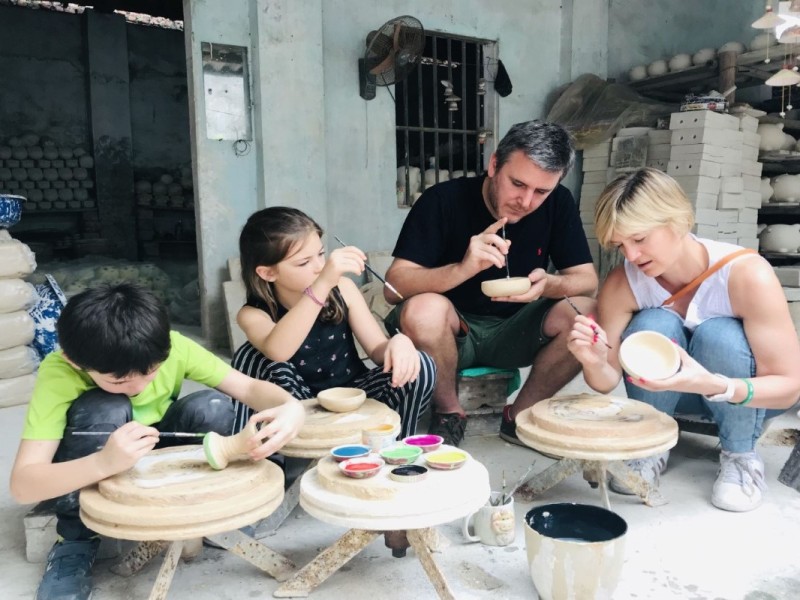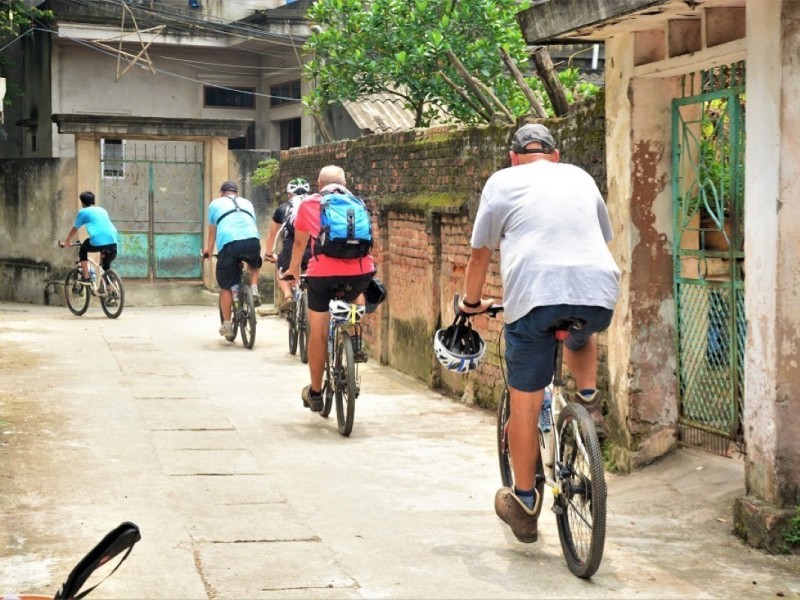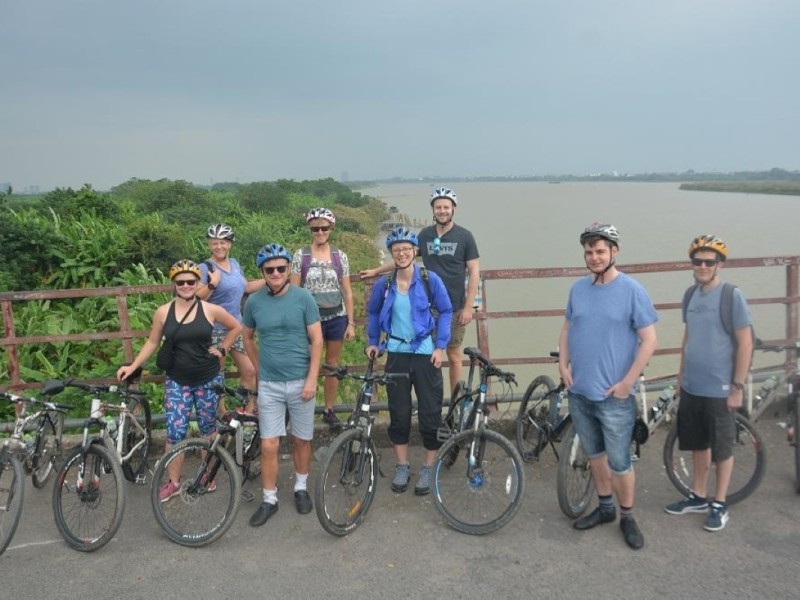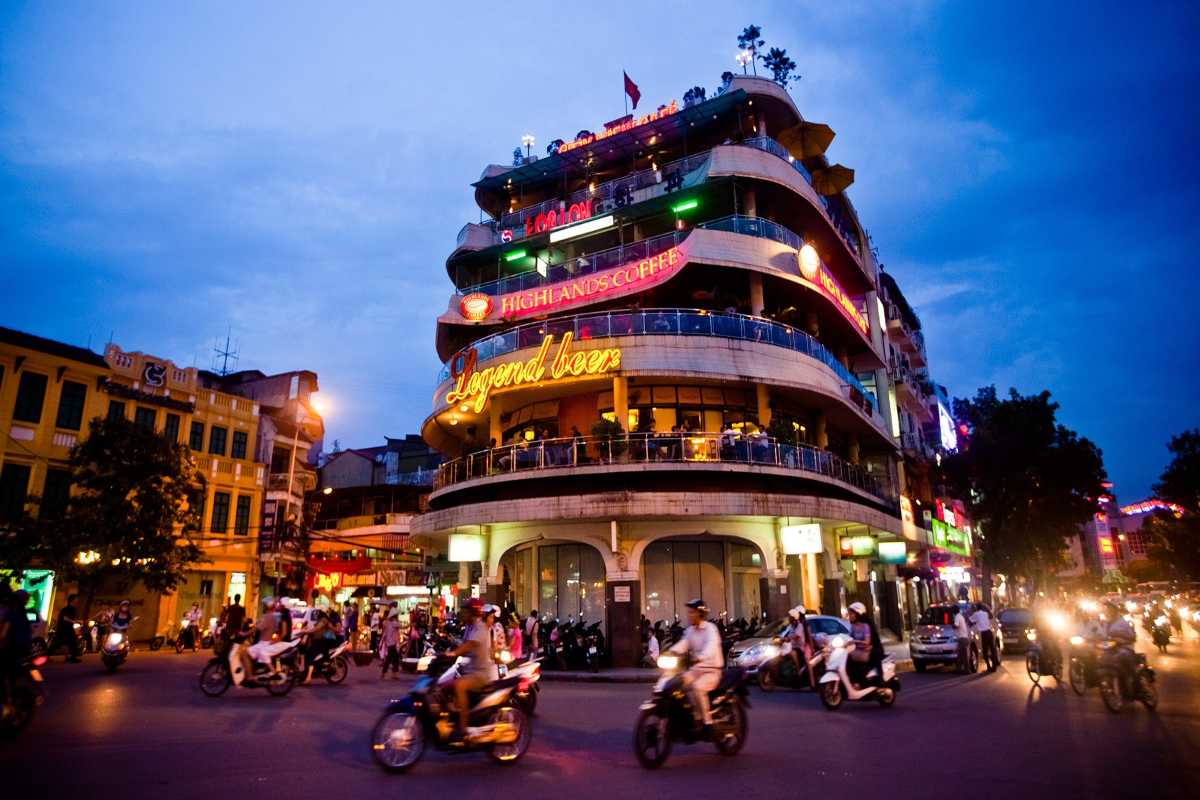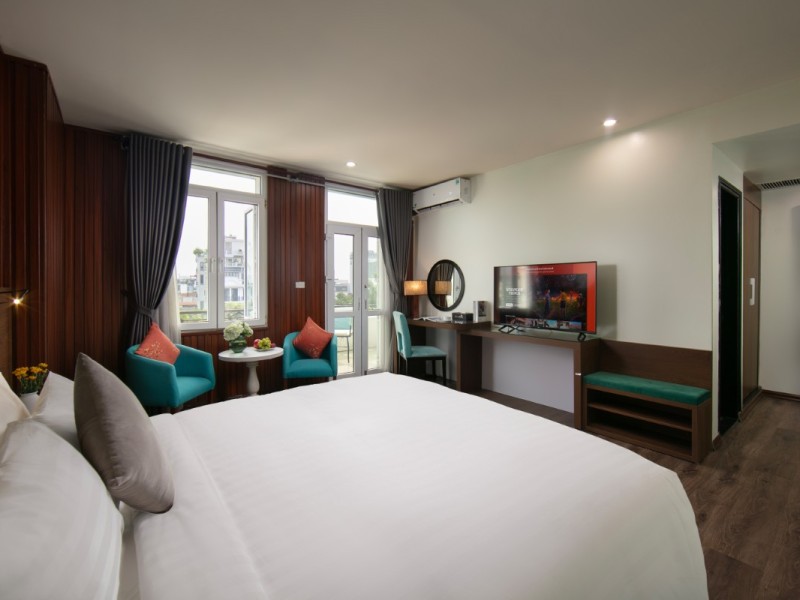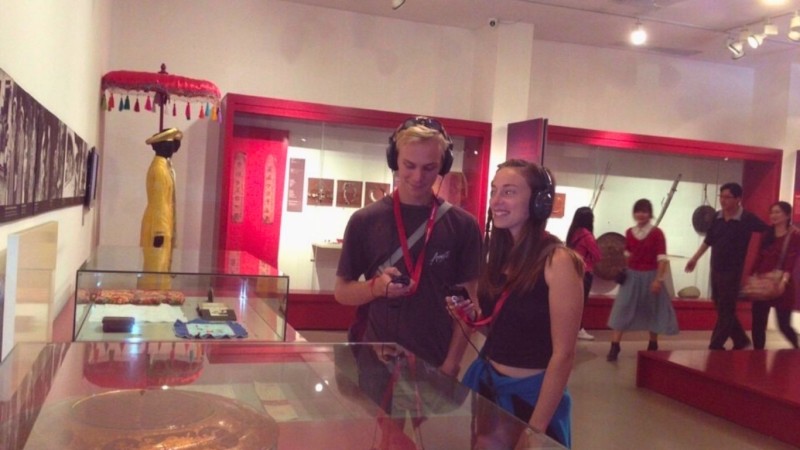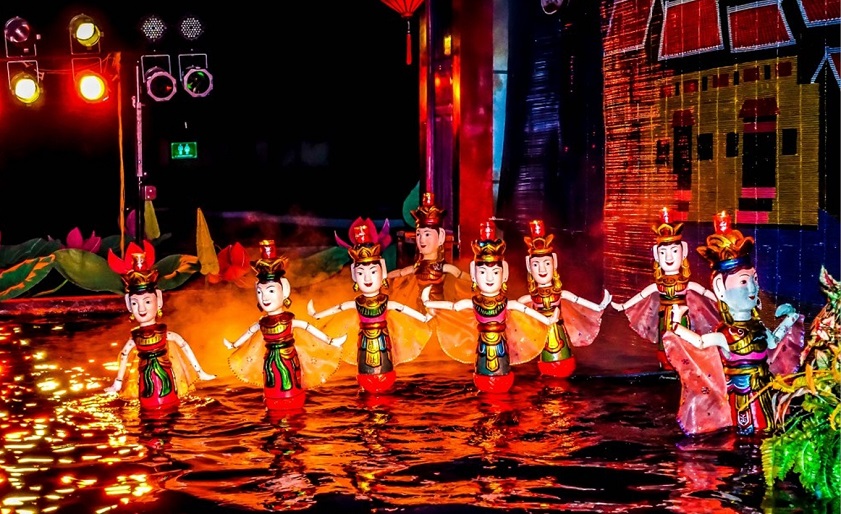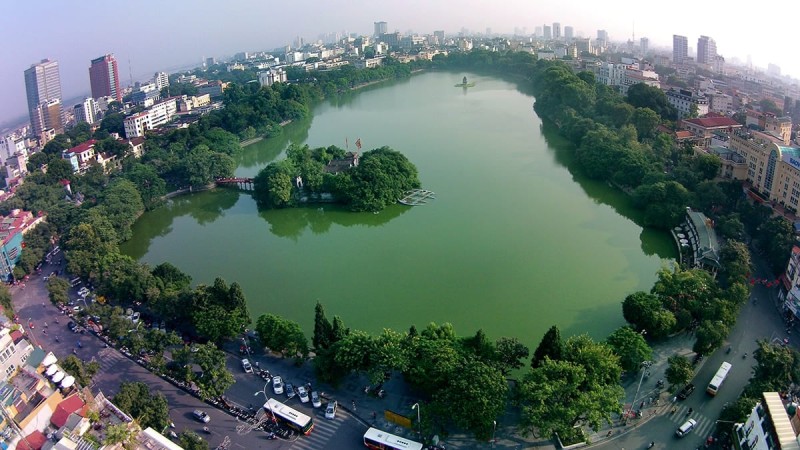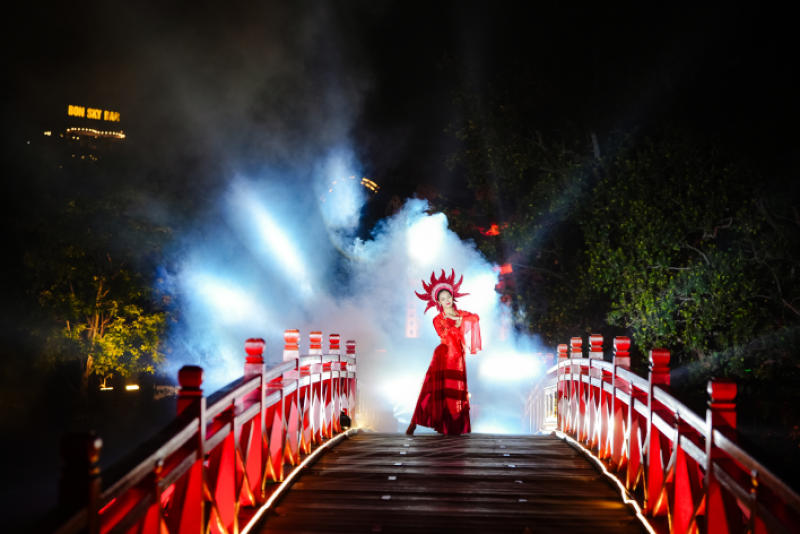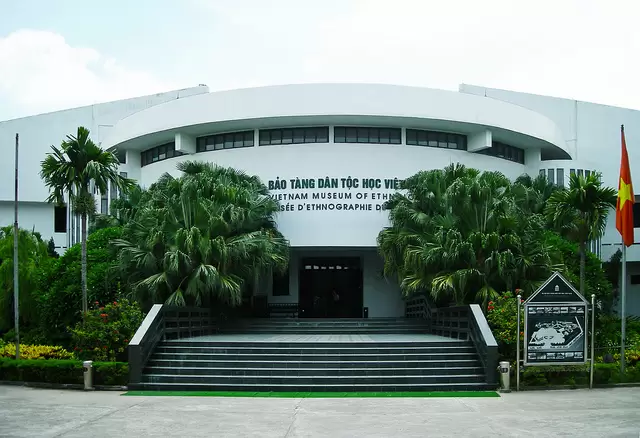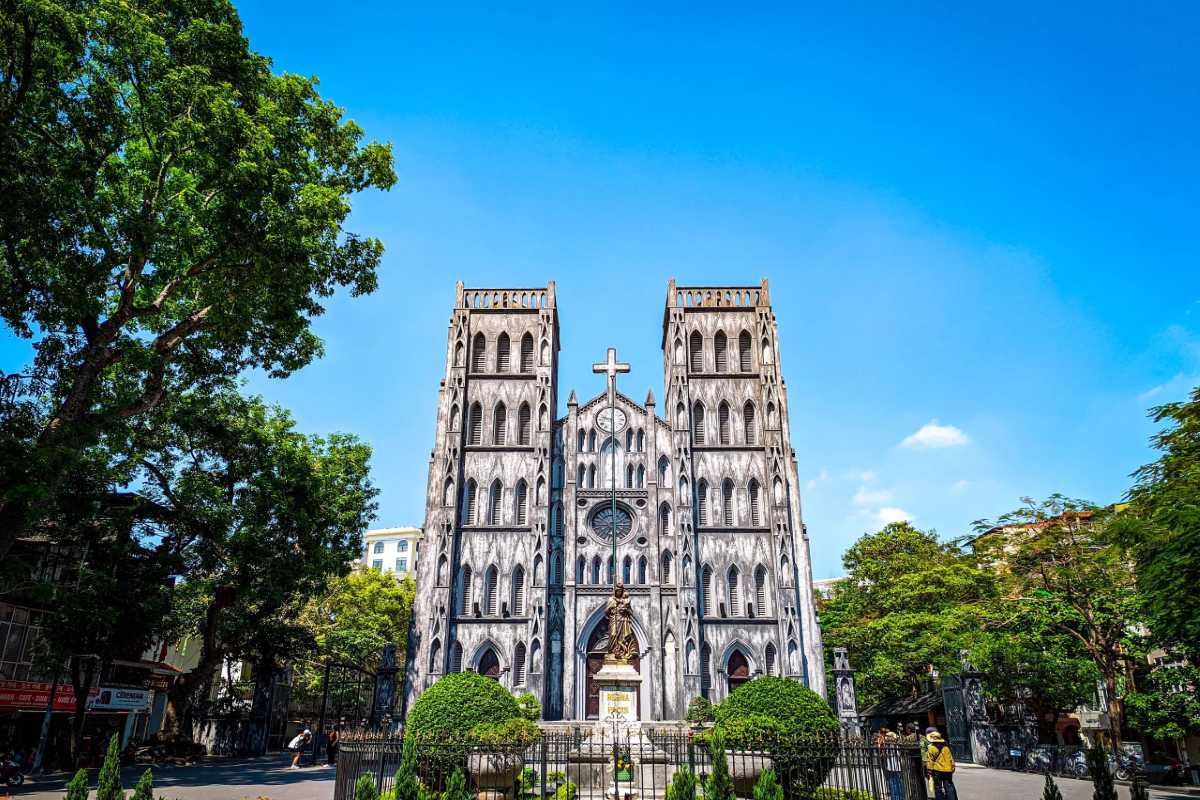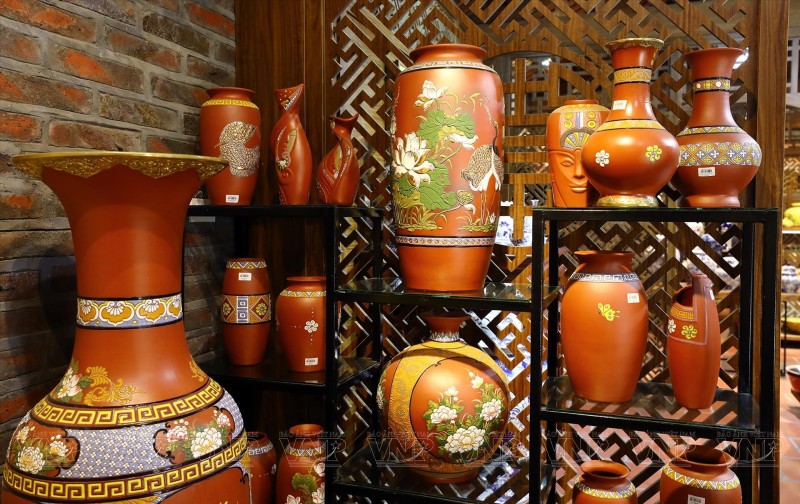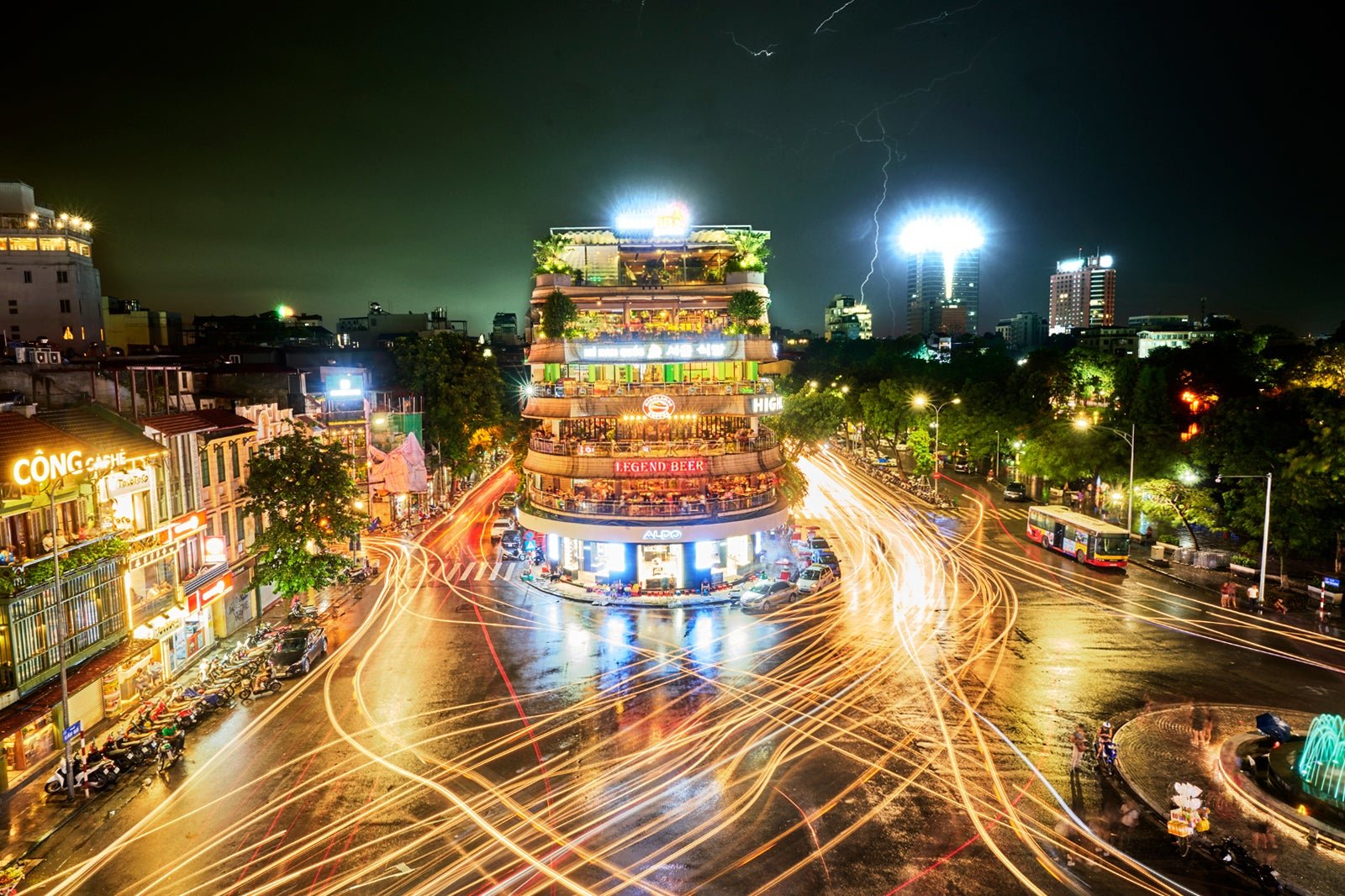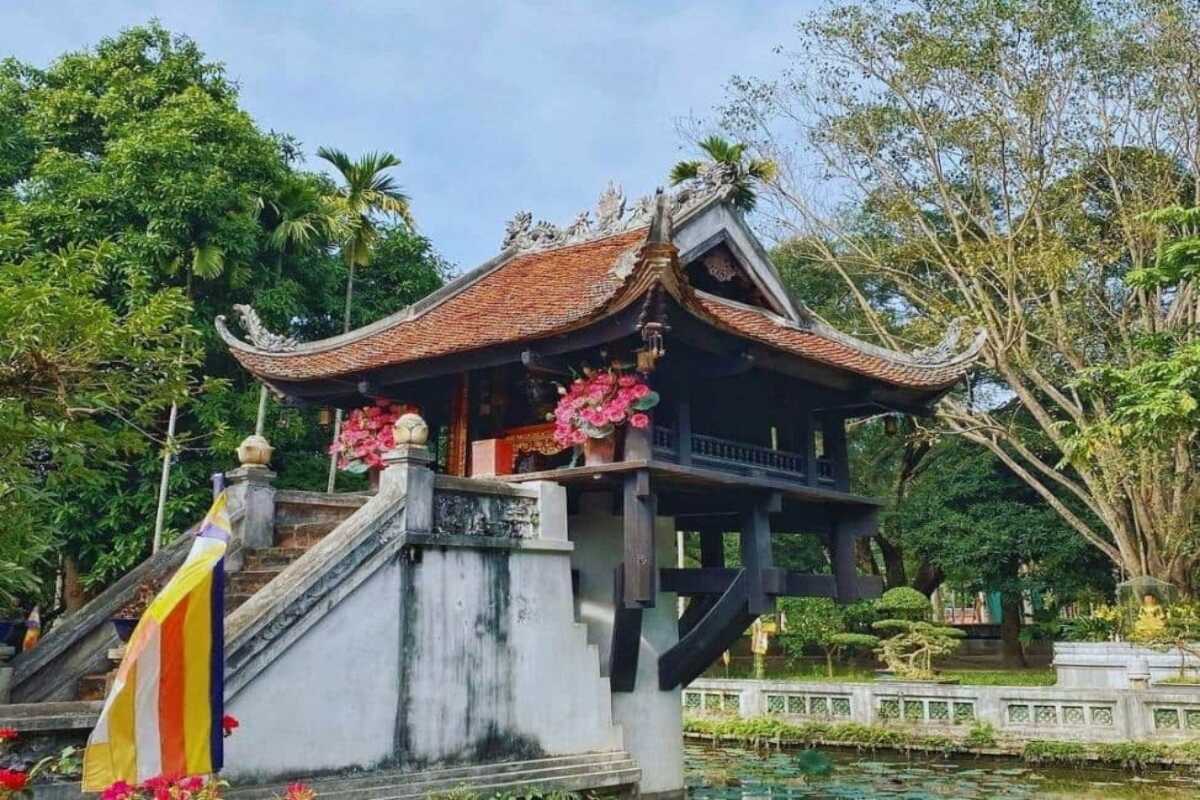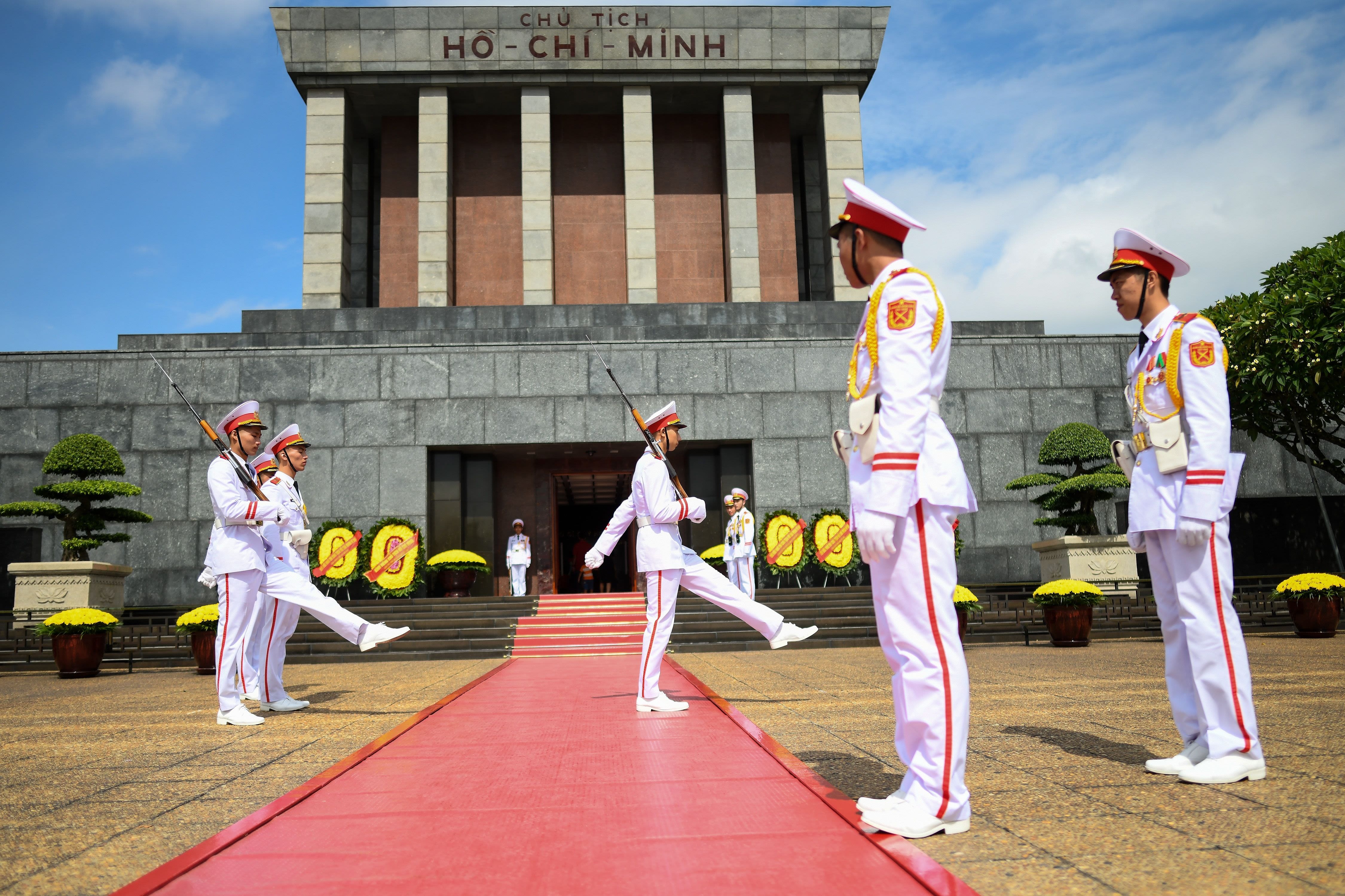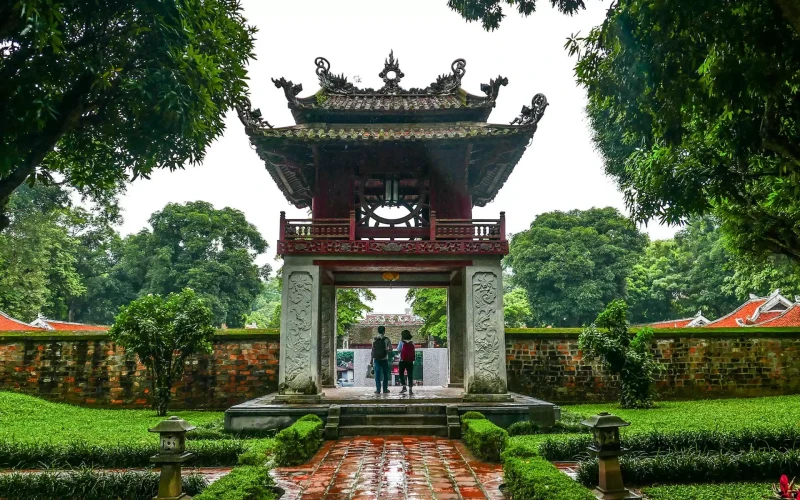Discover the Fascinating History and Architecture of the Hanoi Opera House
The Hanoi Opera House offers a unique cultural experience in the heart of Vietnam’s capital, showcasing stunning French colonial architecture and hosting diverse live performances including opera, ballet, and traditional Vietnamese music. It combines historical significance with vibrant arts events for visitors.
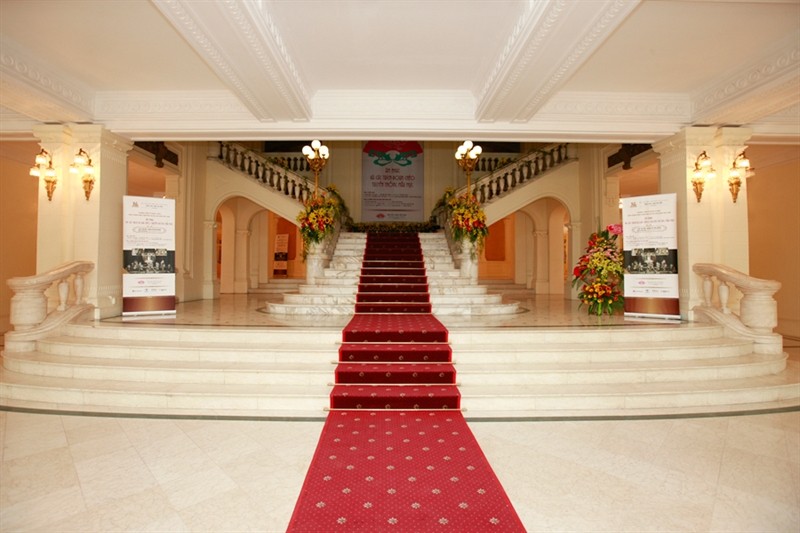
Introduction to Hanoi Opera House
The Hanoi Opera House stands as a distinguished cultural landmark in the heart of Hanoi. Known for its striking French colonial architecture, it embodies the rich blend of history and artistry that defines the city’s heritage. As a premier venue for diverse arts performances, the Opera House offers visitors a window into Vietnam’s vibrant cultural scene. This guide will take you through the Opera House’s history, its role in Vietnamese culture, practical visiting tips, and nearby attractions in the bustling French Quarter of Hanoi city center. Whether you are a history buff, art lover, or curious traveler, the Hanoi Opera House promises an enriching experience.
Plan your visit to Hanoi Opera House and discover why it remains a treasured icon of Hanoi’s cultural landscape.
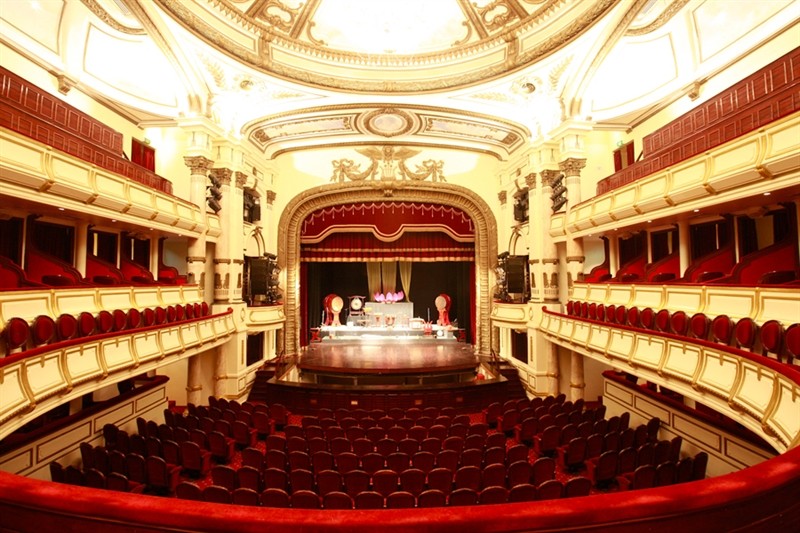
Overview of the Attraction
The Hanoi Opera House is one of the most iconic heritage sites in Hanoi, celebrated for its colonial-era architecture and deep cultural significance. Built during the French colonial period, it reflects a fusion of European design with local Vietnamese artistry, making it a symbol of historical and artistic convergence. This historic theater not only serves as a majestic venue for opera and ballet but also hosts traditional Vietnamese music concerts, offering a broad spectrum of cultural experiences. Visitors are drawn by its architectural grandeur and its vital role as a cultural hub, making it a must-see landmark in the city.
Enjoy a deep dive into the Hanoi Opera House history as you explore the architecture and events that continue to shape its legacy.
Significance as a Cultural and Historical Landmark in Hanoi
The Hanoi Opera House holds immense cultural importance as a centerpiece of Hanoi’s artistic heritage. It represents not only the architectural elegance of the French colonial era but also the resilience and creativity of Vietnamese performing arts throughout history. Recognized as a protected heritage site, it plays a key role in preserving traditional music, dance, and theater within a modern urban setting.
- Cultural Symbol: Embodies Hanoi’s colonial and artistic history
- Heritage Preservation: Supports ongoing efforts to maintain Vietnamese performing arts
- Community Role: Serves as a gathering place for cultural events and education
Discover how this landmark continues to inspire and educate visitors about Hanoi’s rich cultural tapestry.
Role as a Premier Venue for Arts and Performances
The Hanoi Opera House actively showcases a variety of arts performances, ranging from classical opera and ballet to vibrant traditional Vietnamese music concerts. Its programming reflects a commitment to both global art forms and the preservation of Vietnam’s unique cultural identity.
- Opera and Ballet: International and local productions in a historic setting
- Traditional Music: Authentic Vietnamese performances featuring indigenous instruments
- Festivals and Events: Special programming during cultural festivals and holidays
Experience the vibrant arts scene of Hanoi firsthand by attending a performance at the Hanoi Opera House.
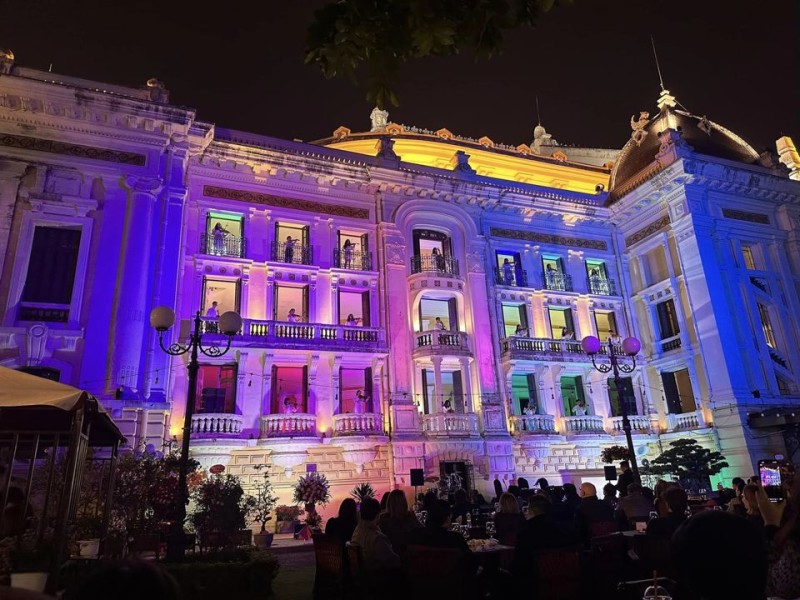
Why Visit Hanoi Opera House
The Hanoi Opera House culture offers visitors a unique chance to immerse themselves in a blend of rich history and vibrant artistic traditions. Nestled in the historic French Quarter, the building's French colonial architecture stands as a testament to Hanoi’s past, while its ongoing cultural performances showcase Vietnam’s living heritage. This attraction combines architectural beauty, historical significance, and cultural experiences that make it a must-see destination on any Hanoi itinerary.
Discover how the Hanoi Opera House delivers an unforgettable cultural journey blending the past with contemporary arts.
Unique Blend of Architecture, History, and Cultural Experiences
The Hanoi Opera House is architecturally distinctive, featuring exquisite French colonial architecture and neoclassical design elements that reflect its European roots. This heritage site is also a dynamic venue for traditional Vietnamese performing arts, creating a unique fusion of East and West. Visitors can admire detailed facades, grand interiors, and a program rich with cultural performances, making it a living monument to both history and art.
- French Colonial Architecture: Elegant columns, decorative moldings, and grand staircases
- Vietnamese Cultural Heritage: Traditional music, dance, and theatrical shows
- Neoclassical Design: Symmetry, frescoes, and elaborate sculptures
Explore the Hanoi Opera House to experience this rare harmony of history and culture.
Accessibility and Location in Central Hanoi
Located in the heart of Hanoi’s French Quarter, the Hanoi Opera House is easily accessible for travelers exploring the city center. Its proximity to landmarks like Hoan Kiem Lake enhances its appeal as a convenient cultural stop. Visitors can reach the Opera House via various public transport options, taxis, and ride-hailing services, making it simple to include in any travel itinerary.
- Central Location: Situated on Trang Tien Street, close to key tourist hubs
- Public Transport: Multiple bus routes serving the area
- Nearby Landmarks: Walking distance to Hoan Kiem Lake and the Old Quarter
- Taxi and Ride-Hailing: Widely available and affordable
Plan your visit knowing the Hanoi Opera House is well connected and centrally located.

What This Guide Covers
This guide offers comprehensive Hanoi Opera House visitor tips to help you navigate the cultural and historical richness of this iconic landmark. You will find detailed information on the Opera House’s history, practical advice for visiting, exciting things to do, and insights into nearby attractions. Designed as a complete Hanoi travel guide, it ensures you experience the best of what the Opera House and its surroundings have to offer.
Explore this guide to plan your visit with confidence and uncover the full cultural tapestry of Hanoi Opera House.
History, Visitor Tips, Things to Do, and Surrounding Attractions
This article covers everything from the Hanoi Opera House history to practical visitor tips and engaging activities. You will learn about its architectural significance, discover live performances and guided tours, and find recommendations for nearby cultural attractions. Whether you want to delve into local traditions or plan your itinerary effectively, this guide provides clear and helpful advice to enhance your trip.
- History: The origins and cultural importance of the Opera House
- Visitor Tips: Best practices for a smooth and enjoyable visit
- Things to Do: Attend shows, take tours, and explore the area
- Surrounding Attractions: Nearby landmarks and dining options
Make the most of your visit with these essential insights into Hanoi Opera House and its vibrant neighborhood.
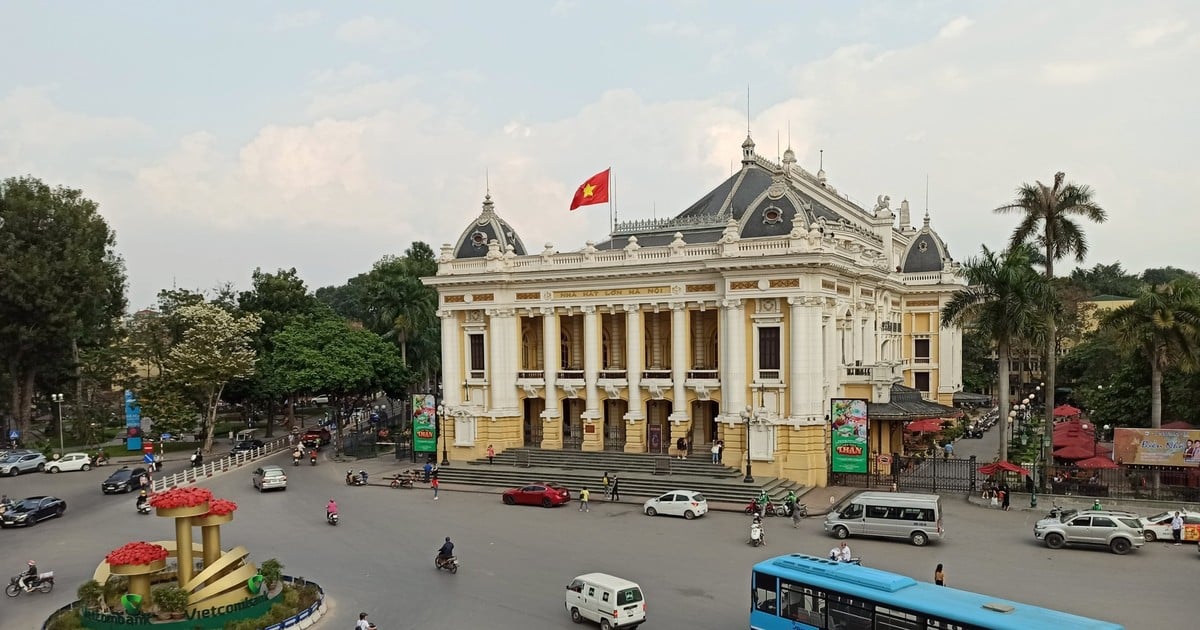
Historical Background and Architectural Significance
The Hanoi Opera House is a masterpiece of French colonial influence and stands as a symbol of Vietnam’s rich cultural heritage. Designed by the French architect Adolphe Bussy, it draws direct inspiration from the famed Palais Garnier in Paris, reflecting the neoclassical design and elaborate colonial-era architecture. Built in the early 20th century, this landmark embodies the blend of European artistic traditions with Vietnamese heritage. Understanding its origins and architectural significance offers deep insight into Hanoi’s historical journey and the preservation efforts that continue to protect this cultural gem.
Explore the detailed history and architecture of Hanoi Opera House to appreciate its role as a timeless cultural monument.
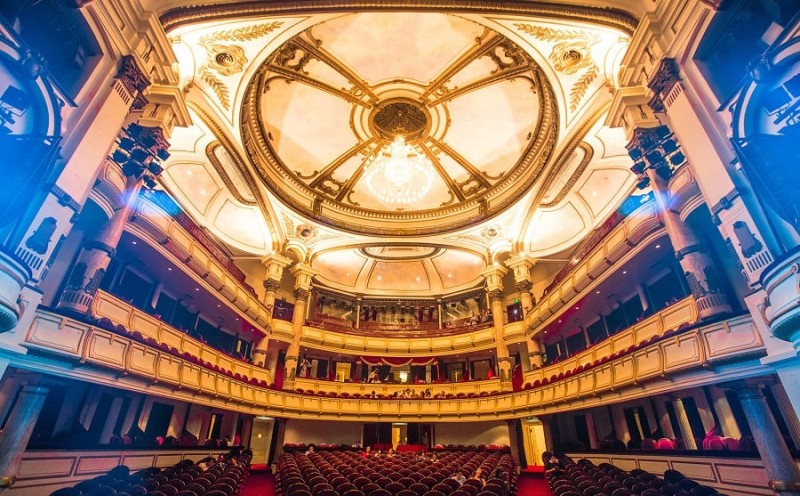
Construction and Colonial Era Origins
The conception of the Hanoi Opera House dates back to the early 1900s, during the height of French colonial rule in Vietnam. Designed by Adolphe Bussy, the building’s architecture is heavily influenced by the Palais Garnier, one of Paris’s most iconic opera houses. The structure exemplifies colonial-era architecture with its neoclassical style, intricate facades, and grand interiors. The construction timeline marks a significant era of urban development in Hanoi, reflecting both French aesthetic values and local adaptations.
This section details the architectural inspiration and the colonial context that shaped the Opera House’s design and construction.
French Colonial Influence and Inspiration from Palais Garnier, Paris
The design of the Hanoi Opera House is a striking example of French colonial architecture, directly modeled on the Palais Garnier in Paris. This inspiration is evident in the building’s neoclassical elements, such as its ornate facade, sculpted columns, and lavish interior frescoes. The colonial influence brought European sophistication to Hanoi, blending it with local artistic sensibilities to create a unique architectural landmark.
Visitors can observe the detailed craftsmanship and elegant design that showcase the fusion of French and Vietnamese cultural elements.
Timeline of Construction and Key Architect Adolphe Bussy
The construction of the Hanoi Opera House began in 1901 and was completed by 1911. Key milestones include:
- 1901: Planning and design phase led by Adolphe Bussy, a prominent French architect
- 1902-1910: Construction of the neoclassical structure incorporating French and local design influences
- 1911: Official inauguration of the Opera House, marking a new cultural era in Hanoi
This timeline highlights the major phases and architectural decisions that shaped this historical monument.
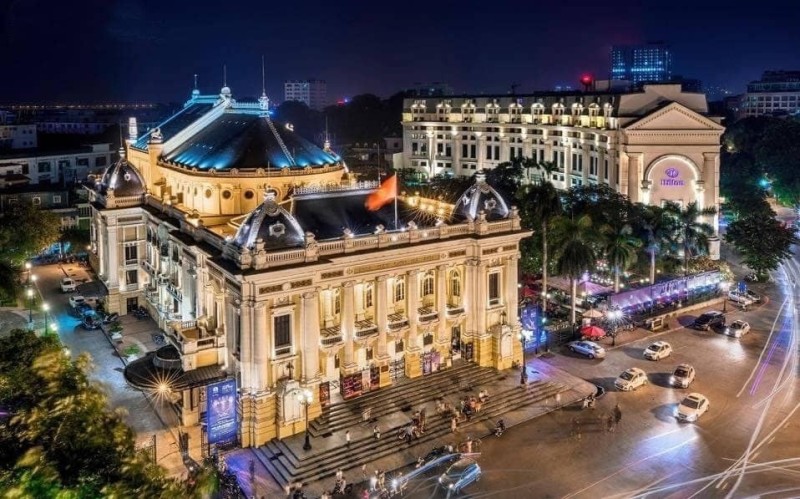
Role in Vietnam’s History
The Hanoi Opera House has played a significant role beyond its architectural grandeur, serving as a vital site during important moments in Vietnam’s history. It was a key venue during the August Revolution, symbolizing the nation’s struggle for independence and cultural identity. Over time, the Opera House has witnessed the transition from colonial rule to modern governance, evolving as a powerful cultural symbol and gathering place for revolutionary activities. Understanding this historical context reveals the Opera House’s deeper significance in shaping Vietnam’s national story.
Explore how the Hanoi Opera House served as a political and cultural beacon during crucial phases of Vietnam’s journey to independence.
Function During the August Revolution and Independence Movement
During the August Revolution, the Hanoi Opera House was more than just a theater; it became a hub for revolutionary gatherings and political discourse. The venue hosted key meetings and cultural events that rallied support for Vietnam’s independence from colonial powers. Its role as a site of resistance and expression made it a symbolic landmark in the fight for national liberation.
- Revolutionary Gatherings: Meetings promoting independence strategies
- Cultural Performances: Shows reflecting patriotic themes and solidarity
- Colonial Resistance: The Opera House as a stage for anti-colonial sentiment
The August Revolution cemented the Opera House’s place in Hanoi’s independence history.
Changes Post-French Colonial Period and Preservation Initiatives
After the end of French colonial rule, the Hanoi Opera House faced challenges of preservation amid political and social changes. The Vietnamese government and cultural organizations initiated restoration projects to maintain the building’s architectural integrity and cultural relevance. These efforts ensured the Opera House remained a functioning venue and a protected heritage site, symbolizing both resilience and respect for Vietnam’s cultural legacy.
- Post-Colonial Preservation: Restoration of structural and artistic features
- Cultural Heritage Protection: Policies safeguarding historic sites
- Government Initiatives: Ongoing funding and support for cultural venues
Today, the Opera House stands as a testament to Vietnam’s commitment to preserving its rich history and cultural heritage.
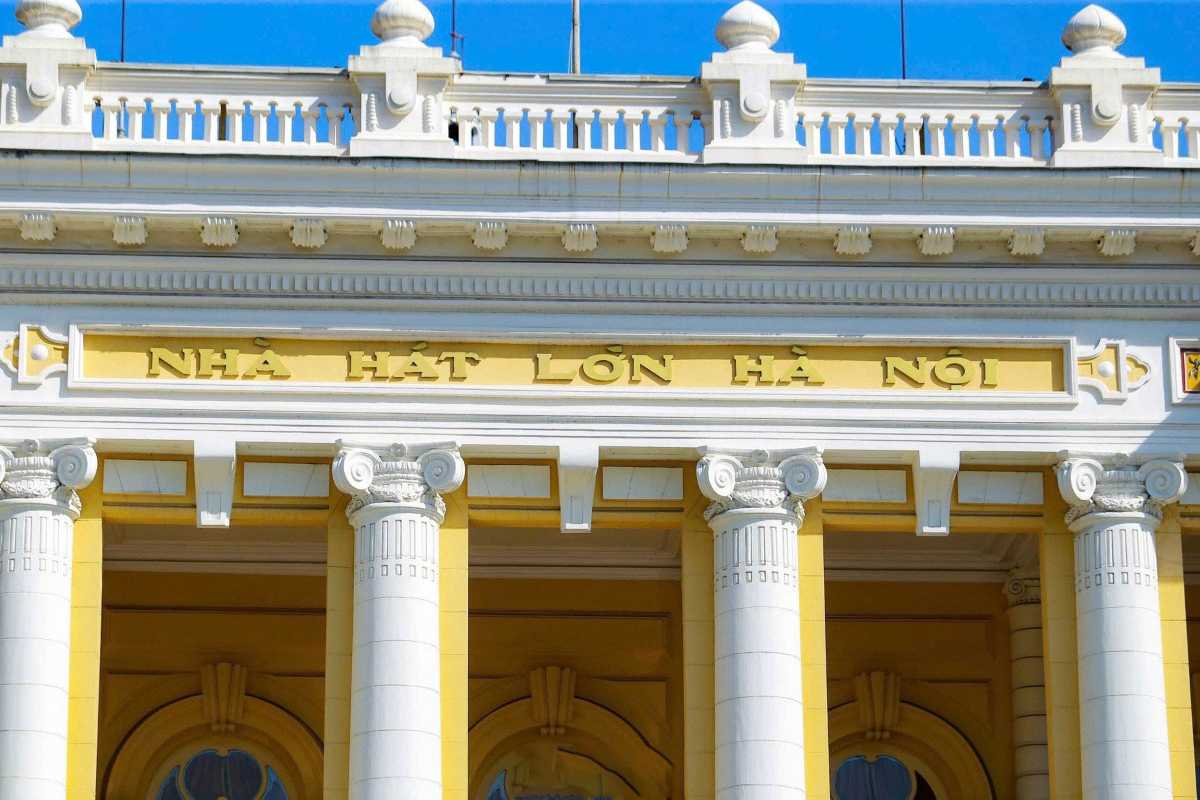
Architectural Features and Artistic Elements
The Hanoi Opera House is renowned for its distinctive architectural features and rich artistic elements that showcase a remarkable blend of French and Vietnamese styles. Its design is a masterpiece of neoclassical architecture, boasting a grand facade and elaborate ornamentation. Inside, visitors encounter a beautifully designed auditorium adorned with frescoes, sculptures, and elegant marble floors. This fusion of European and local artistry creates a unique cultural landmark that captivates all who visit.
Experience the intricate details and artistic grandeur that make the Hanoi Opera House a must-see architectural treasure.
Neoclassical Facade and Detailed Exterior Ornamentation
The exterior of the Hanoi Opera House features a stunning neoclassical architecture style characterized by its ornate facade and colonial design influences. Visitors can admire the intricate carvings, sculpted columns, and decorative elements that embellish the building’s surface, reflecting the elegance and grandeur of early 20th-century French design.
- Ornate Facade: Rich decorative moldings and sculptural details
- Colonial Design: Symmetrical layout and classic European motifs
- Architectural Details: Balconies, arches, and reliefs enhancing visual impact
These features make the Opera House a visual icon in Hanoi’s urban landscape.
Interior Design Highlights: Auditorium, Frescoes, Sculptures, and Marble Floors
Step inside the Hanoi Opera House to discover an interior rich in artistic expression. The auditorium is a marvel of design, featuring intricately painted frescoes and finely crafted sculptures. Marble floors add to the luxurious ambiance, while the stage’s elegant design supports a variety of performances, creating a captivating experience for audiences.
- Auditorium Design: Spacious seating with excellent acoustics
- Frescoes: Vibrant ceiling and wall paintings depicting cultural themes
- Sculptures: Artistic works that enhance the venue’s grandeur
- Marble Flooring: Polished and intricate stonework elevating the decor
The interior artistry reflects a deep commitment to aesthetic beauty and cultural preservation.
Blend of French and Vietnamese Artistic Motifs
The Hanoi Opera House uniquely blends French-Vietnamese art fusion through its architecture and decorative motifs. This cultural synthesis is visible in the combination of European neoclassical elements with traditional Vietnamese artistic expressions, creating a heritage site that honors both influences. The building stands as a symbol of colonial history intertwined with local cultural identity.
- French Elements: Classic neoclassical patterns and design principles
- Vietnamese Motifs: Indigenous patterns, colors, and symbolic art
- Cultural Heritage: A harmonious blend representing Hanoi’s past and present
This fusion enriches the visitor’s appreciation of Hanoi Opera House as a cultural landmark.
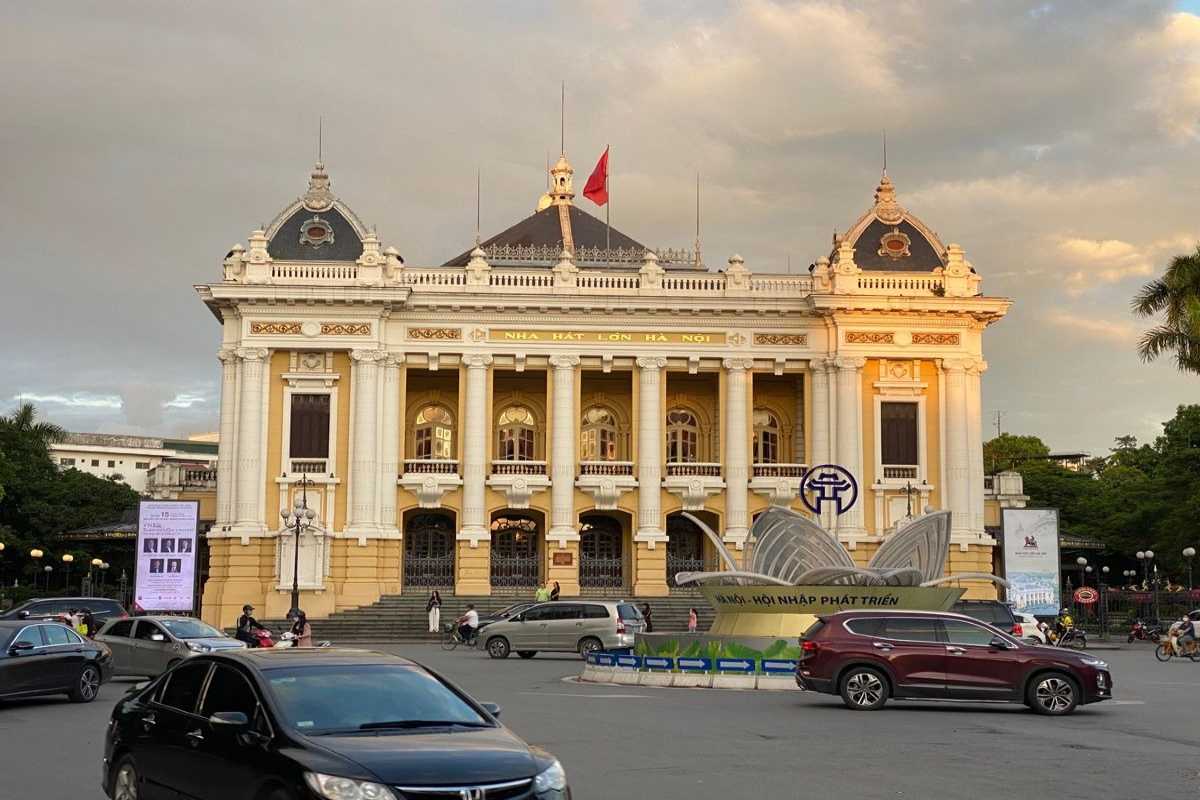
Preservation and Restoration Efforts
The Hanoi Opera House is not only a cultural icon but also a heritage site that requires ongoing preservation to maintain its architectural and historical integrity. Various restoration projects have been undertaken recently to conserve its original features while addressing the challenges posed by rapid urban development in Hanoi. Understanding these efforts reveals the dedication involved in protecting this landmark for future generations.
Learn about the restoration projects and conservation challenges facing the Hanoi Opera House and the roles of key cultural organizations and government bodies.
Recent Restoration Projects Maintaining Authenticity
Recent restoration initiatives have focused on preserving the authenticity of the Hanoi Opera House, ensuring that the building retains its original charm and architectural details. These projects include:
- Careful repair of the neoclassical facade and exterior ornamentation
- Restoration of interior frescoes, sculptures, and marble floors
- Use of advanced conservation technology to maintain historical accuracy
- Collaboration with heritage experts to respect original design
These efforts support cultural tourism by keeping the Opera House both beautiful and functional.
Challenges of Conservation Amid Urban Development
Preserving the Hanoi Opera House presents several challenges, particularly as the city of Hanoi continues to grow and modernize. Key issues include:
- Pressure from urban expansion affecting the surrounding environment
- Balancing modernization needs with heritage protection
- Risks of structural damage due to pollution and increased traffic
- Ensuring sustainable conservation funding and resources
Despite these challenges, efforts remain hopeful and focused on protecting this cultural treasure.
Government and Cultural Organization Roles in Preservation
The preservation of the Hanoi Opera House involves multiple stakeholders, including government bodies and cultural organizations. Their roles encompass:
- Implementing heritage management policies and cultural protection laws
- Providing funding and support for restoration projects
- Organizing educational programs and public awareness campaigns
- Collaborating with international experts on conservation techniques
The Vietnamese government plays a crucial role in ensuring the Opera House’s continued cultural significance.
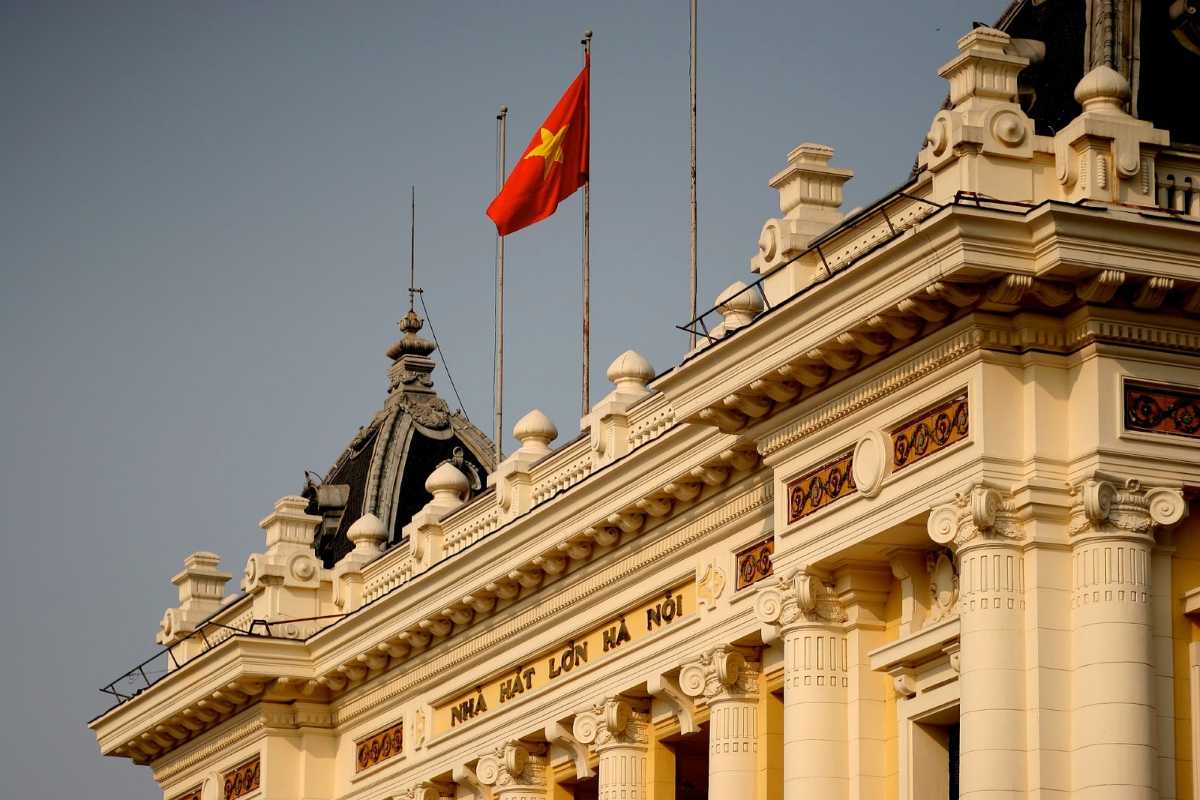
Visiting Hanoi Opera House: Practical Information
The Hanoi Opera House is located in the heart of Hanoi’s historic French Quarter, making it easily accessible to visitors exploring the city center. Close to Hoan Kiem Lake, the Opera House offers convenient transport links including buses, taxis, and ride-hailing services. This section provides essential information about how to reach the venue, opening hours, ticket prices, visitor amenities, and accessibility options to ensure a smooth and enjoyable visit.
Plan your trip to the Hanoi Opera House with these practical tips to maximize your experience.
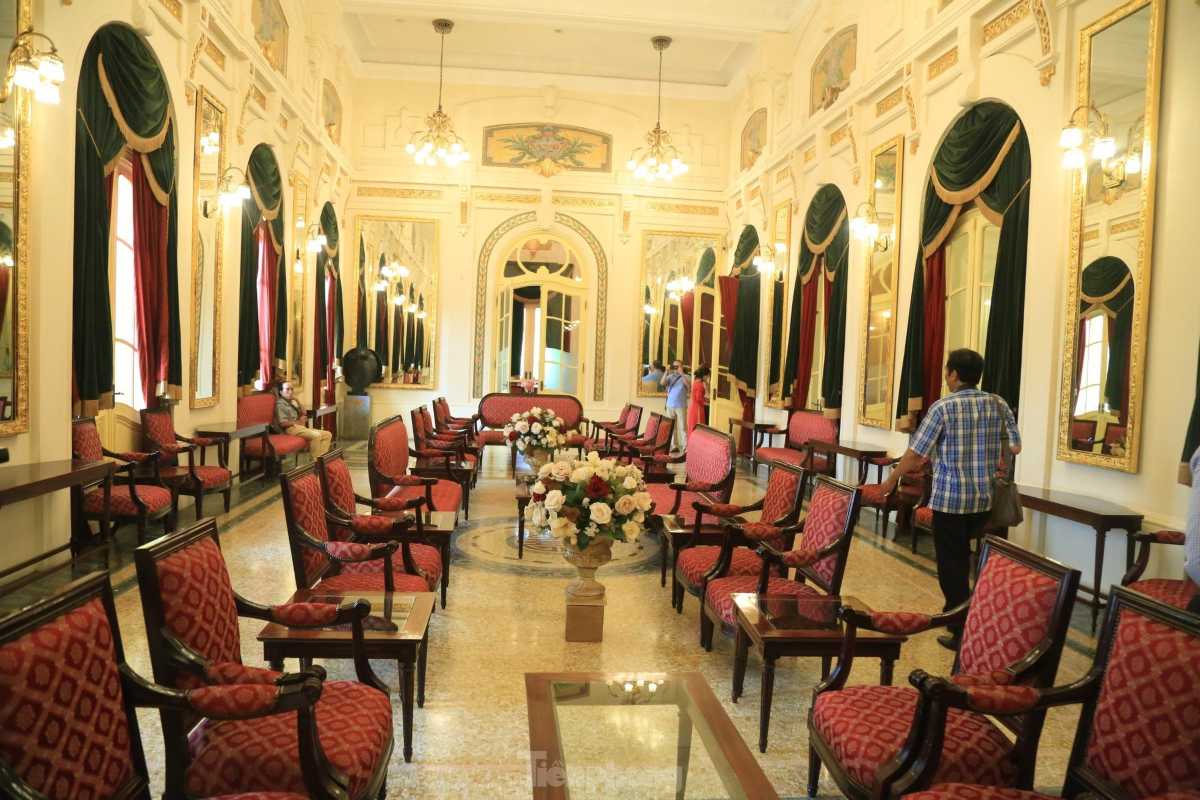
Location and How to Get There
The Hanoi Opera House sits prominently on Trang Tien Street within the French Quarter, a short walk from Hoan Kiem Lake. Visitors can reach the venue using various transport methods tailored to their convenience and budget.
- Hanoi Opera House location: Central French Quarter neighborhood
- How to get there: Bus routes including #09, #31, and #45 serve nearby stops
- Taxi services: Widely available with affordable fares in Hanoi
- Ride-hailing: Popular apps like Grab offer convenient and safe options
With these transport choices, navigating to the Hanoi Opera House is simple and straightforward.
Address and Setting in Hanoi’s French Quarter
The Hanoi Opera House is located at 1 Trang Tien Street, right in the heart of the French Quarter. This historic district is known for its colonial-era buildings, tree-lined boulevards, and vibrant cultural atmosphere. The Opera House’s elegant facade fits seamlessly into this setting, offering visitors a glimpse into Hanoi’s colonial past.
Public Transportation Options: Bus Routes, Taxis, Ride-Hailing
Visitors can use several convenient transport options to reach the Hanoi Opera House:
- Bus routes: Lines #09, #31, #45 stop near the Opera House
- Taxi services: Numerous companies operate throughout Hanoi, providing door-to-door convenience
- Ride-hailing apps: Grab and other services are widely used for easy access
- Accessibility: Public transport is affordable and efficient for most travelers
These options make reaching the Opera House easy whether you prefer public transit or private rides.
Proximity to Landmarks like Hoan Kiem Lake and Old Quarter
The Hanoi Opera House is strategically located near several key attractions:
- Hoan Kiem Lake: Approximately a 5-minute walk, a major scenic and cultural site
- Old Quarter: Around 10 minutes on foot, known for bustling markets and historic streets
- Other nearby landmarks: St. Joseph’s Cathedral and museums within walking distance
- Walkability: The area is pedestrian-friendly, encouraging combined visits
This prime location allows visitors to easily include the Opera House in a broader Hanoi sightseeing itinerary.
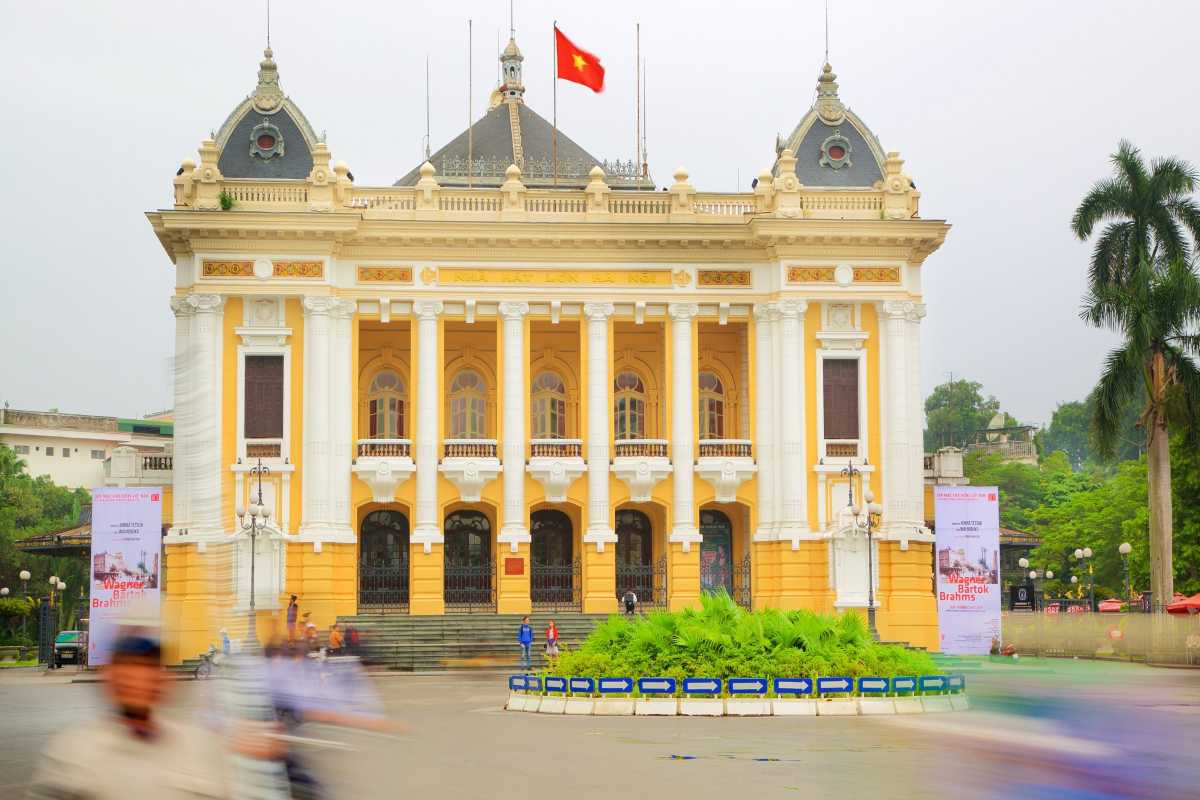
Opening Hours and Ticketing
Knowing the Hanoi Opera House opening hours and ticket prices is essential for planning your visit. The venue operates daily with specific times for tours and performances. Tickets can be purchased through various channels, ensuring convenience and flexibility for visitors. Understanding these details will help you confidently schedule your visit and enjoy the full cultural experience.
Familiarize yourself with the Hanoi Opera House ticket prices and booking options to secure your place at this iconic venue.
Operating Days and Hours for Tours and Performances
The Hanoi Opera House welcomes visitors and hosts performances during the following schedule:
- Tours: Available Monday through Saturday, 9:00 AM to 5:00 PM
- Performances: Typically held in the evenings, from 7:30 PM to 9:30 PM
- Closed on Sundays and national holidays, except for special events
- Showtimes may vary based on seasonal and festival programming
Check the official schedule before your visit to ensure availability.
Price Ranges for Entry, Tours, and Shows
Visitors should expect the following price ranges for entry and performances at the Hanoi Opera House:
- General admission for guided tours: Approximately 30,000 to 50,000 VND
- Performance tickets: Range from 200,000 to 1,000,000 VND depending on the event and seating
- Discounts may be available for students, seniors, or group bookings
- Additional fees for special tours or backstage access
Planning your budget ahead helps ensure a seamless experience.
Booking Methods: Online, On-Site, Travel Agencies
There are several convenient ways to book your Hanoi Opera House tickets:
- Online: Through official websites and authorized ticket platforms for advance booking
- On-Site: Ticket counters at the Opera House open during business hours
- Travel Agencies: Local agencies often offer package deals including tickets and guided tours
- Mobile Apps: Popular apps such as Grab sometimes offer booking assistance or combined transport and ticket services
Choose the method that best suits your travel plans and preferences.
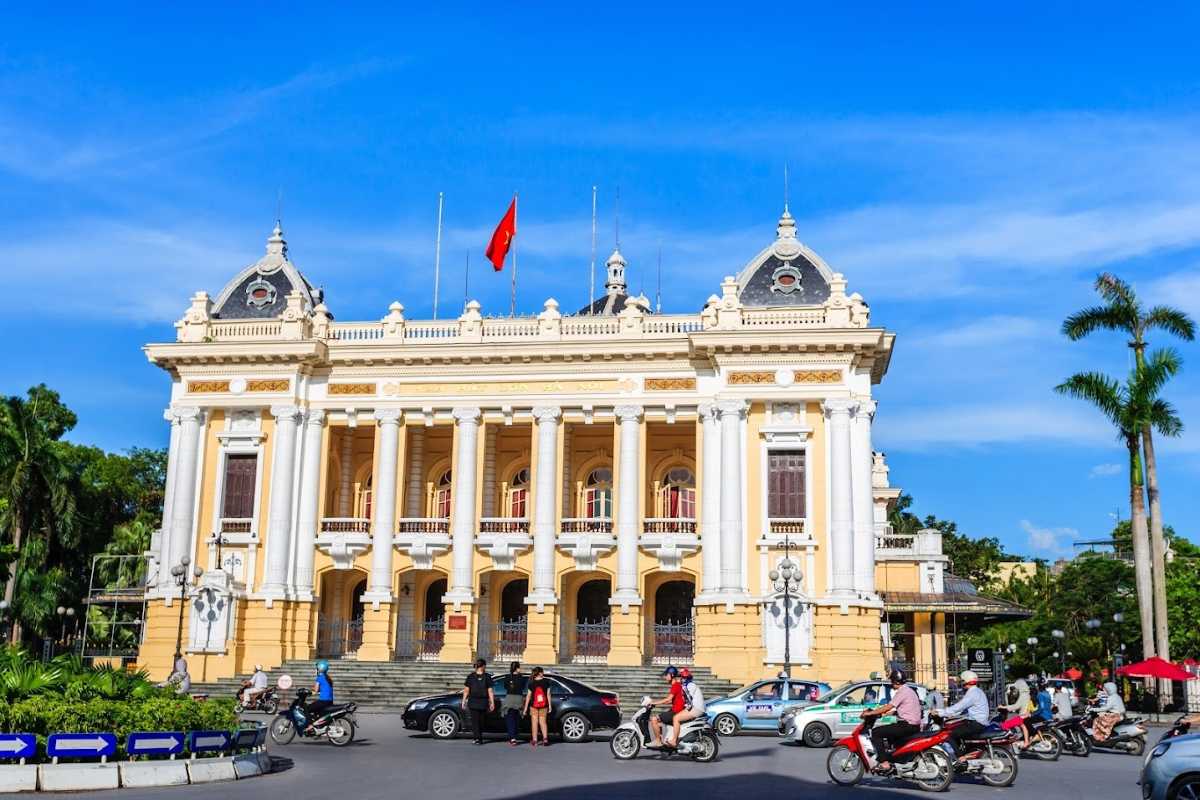
Visitor Amenities and Accessibility
The Hanoi Opera House offers a range of visitor amenities designed to ensure comfort and convenience throughout your visit. Accessibility is a priority, with facilities and services in place to support disabled visitors and enhance the overall experience for everyone. Being informed about these features helps you plan ahead and enjoy the Opera House with ease.
Discover the thoughtful amenities and accessibility options available at the Hanoi Opera House to make your visit comfortable and inclusive.
Facilities Including Restrooms, Cafes, and Gift Shops
Visitors to the Hanoi Opera House can enjoy a variety of on-site amenities, including:
- Restrooms: Clean and well-maintained facilities located conveniently throughout the venue
- Cafes: On-site cafes offering refreshments and light snacks for visitors
- Gift Shops: Souvenir shops featuring cultural items and memorabilia related to the Opera House and Hanoi
- Seating Areas: Comfortable waiting and rest zones for relaxation
These amenities contribute to a pleasant and hassle-free experience at the Opera House.
Accessibility for Disabled Visitors and Available Support
The Hanoi Opera House is committed to accessibility, providing services such as:
- Wheelchair Access: Ramps and elevators available for ease of movement
- Assisted Entry: Staff support for visitors requiring help
- Reserved Seating: Designated areas for disabled guests to enjoy performances comfortably
- Accessibility Information: Clear signage and guidance throughout the venue
These features ensure that all visitors, regardless of mobility, can fully experience the cultural richness of the Opera House.

Best Times to Visit
The best time to visit Hanoi Opera House depends on your preferences for weather, crowd levels, and special events. Planning your visit during favorable seasons and less busy periods can greatly enhance your experience, allowing you to enjoy performances and tours comfortably.
Discover the optimal visiting times to make the most of your trip to the Hanoi Opera House.
Recommended Seasons and Times for Visits and Performances
Consider these ideal periods for visiting the Hanoi Opera House and attending performances:
- October to December: Cool, dry weather perfect for sightseeing and outdoor exploration
- February to April: Pleasant spring climate with many cultural festivals
- Avoid peak rainy season (May to September) to reduce weather-related disruptions
- Check performance schedules during major festivals such as Tet for special shows
Timing your visit during these seasons enhances comfort and access to cultural events.
Peak vs Off-Peak Periods and Crowd Management Tips
To avoid crowds and ensure a relaxed visit to the Hanoi Opera House, keep these tips in mind:
- Peak season: October to December and spring months see higher visitor numbers
- Off-peak times: Early mornings on weekdays generally have fewer visitors
- Book tickets in advance during festivals and holiday periods
- Arrive early for tours and performances to secure preferred seating and avoid lines
Following these strategies will help you enjoy a smoother, more enjoyable experience.

Experiences and Things to Do at Hanoi Opera House
The Hanoi Opera House offers a rich variety of experiences, from attending world-class live performances to exploring cultural tours and nearby attractions. Whether you are drawn to opera, ballet, traditional Vietnamese music, or seasonal festivals, this iconic venue serves as a vibrant cultural hub in the French Quarter. Beyond the shows, visitors can discover nearby landmarks like St. Joseph’s Cathedral, enriching their visit with a full cultural itinerary.
Discover engaging activities and events at the Hanoi Opera House that bring Vietnam’s artistic heritage to life.
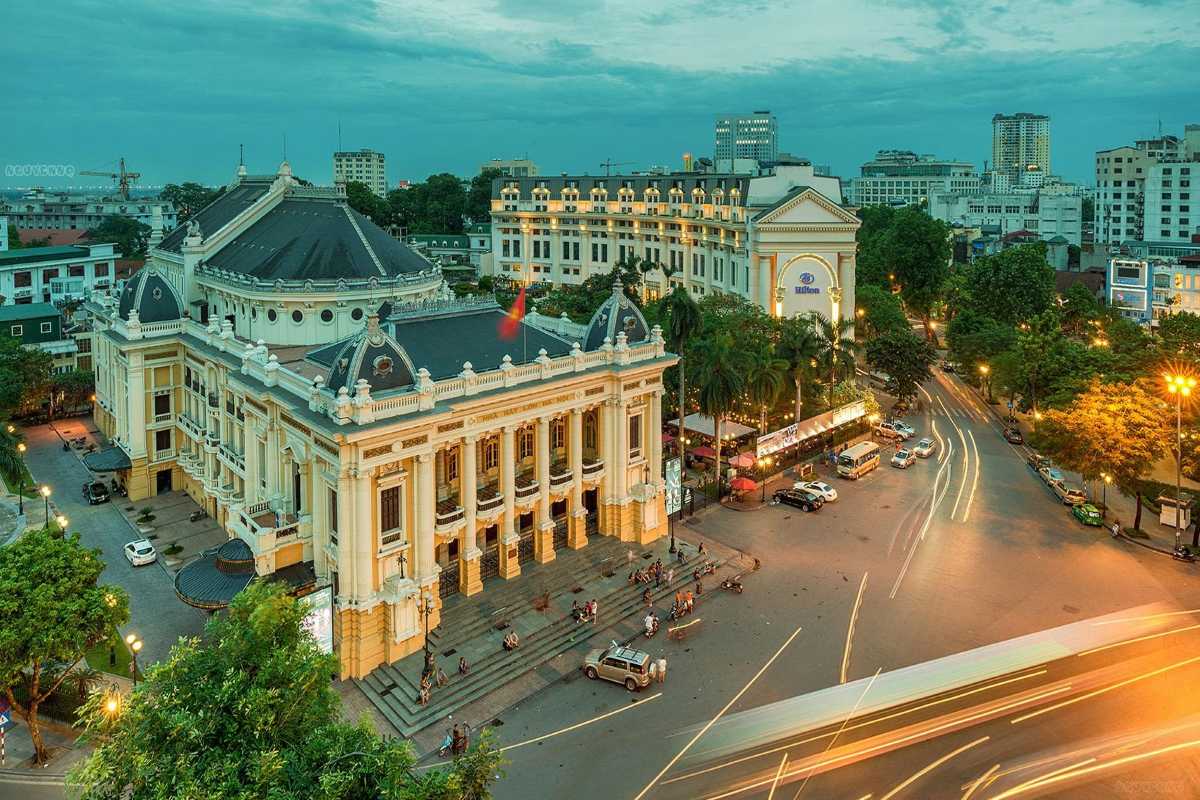
Attend Live Performances
Attending live shows at the Hanoi Opera House is a highlight for many visitors. The venue hosts an array of performances that celebrate both international and Vietnamese artistic traditions.
- Hanoi Opera House opera shows: Classic Western operas performed by skilled artists
- Ballet performances: Graceful dance productions showcasing global and local talents
- Traditional Vietnamese music concerts: Authentic cultural music featuring indigenous instruments
- Live concerts and cultural performances: Various genres throughout the year
Plan your visit around these events and enjoy the vibrant arts scene in Hanoi.
Range of Shows: Opera, Ballet, Traditional Vietnamese Music, Concerts
The Hanoi Opera House offers diverse performances, including:
- Opera Hanoi: Classic and contemporary operatic productions
- Ballet Performances: International and Vietnamese dance shows
- Vietnamese Traditional Music: Performances highlighting indigenous instruments and melodies
- Cultural Arts: Concerts and theatrical presentations celebrating Vietnamese heritage
This variety ensures a rich cultural experience for all visitors.
Special and Seasonal Events like Festivals and Tet Celebrations
Special events at the Hanoi Opera House provide unique cultural insights:
- Tet Festival Events: Celebrations featuring traditional music and dance performances
- Seasonal Shows: Programs aligned with national holidays and cultural festivals
- Hanoi International Film Festival: Hosted occasionally at the Opera House, showcasing cinema from Vietnam and abroad
- Holiday Celebrations: Concerts marking important cultural dates
Timing your visit during these events offers a memorable cultural immersion.
Tips for Ticket Purchase and Seating Selection
To ensure the best experience at the Hanoi Opera House, follow these tips:
- Purchase tickets in advance online to secure preferred dates
- Choose seating based on view preference: front rows for close-up, balconies for panoramic perspectives
- Check official sources for discounted rates or group bookings
- Arrive early to navigate the venue comfortably and enjoy pre-show amenities
These strategies help you enjoy performances without hassle.

Guided Tours and Cultural Programs
The Hanoi Opera House offers a variety of guided tours and cultural programs designed to deepen your understanding of its architecture and Vietnamese performing arts. These educational opportunities allow visitors to explore the rich history behind the building and engage with traditional art forms through workshops and backstage experiences. Whether you prefer a historical tour or hands-on cultural learning, the Opera House provides enriching options for all interests.
Discover the educational tours and programs at the Hanoi Opera House to enhance your visit with meaningful cultural insights.
Architectural and Historical Guided Tours Available
Visitors can choose from several tours focused on the Opera House’s architectural and historical significance:
- Hanoi Opera House architecture tours: In-depth exploration of the building’s neoclassical design
- Historical tours Hanoi: Narratives detailing the Opera House’s colonial past and cultural impact
- Cultural heritage tours: Broader context tours including the surrounding French Quarter
These tours provide a comprehensive understanding of the landmark’s unique place in Hanoi’s history.
Educational Programs on Vietnamese Performing Arts
The Opera House hosts educational initiatives that offer immersive experiences in traditional arts:
- Vietnamese performing arts programs Hanoi: Workshops and lectures on indigenous music and dance
- Cultural education: Classes designed to teach the history and techniques of Vietnamese performance
- Traditional music workshops: Hands-on sessions with native instruments and styles
These programs invite visitors to engage actively with Vietnam’s artistic heritage.
Opportunities for Exclusive Backstage Access or Workshops
For a truly special experience, the Hanoi Opera House offers exclusive backstage tours and workshops:
- Hanoi Opera House backstage tours: Guided visits behind the scenes to see preparation and stagecraft
- Exclusive workshops Hanoi: Intimate sessions with performers and experts
- VIP experiences: Personalized access and cultural immersion opportunities
Such offerings provide unique insights and a memorable connection to the Opera House’s vibrant arts community.
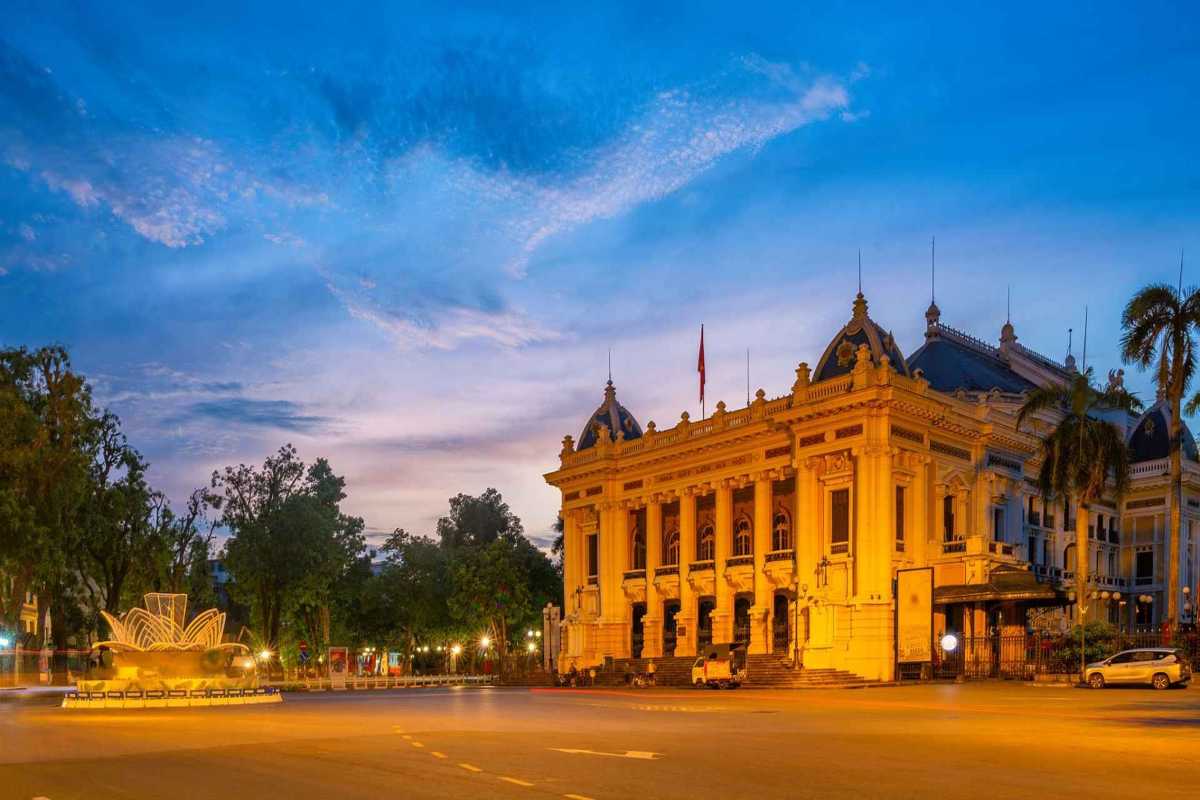
Exploring the Surrounding Area
If you want to enrich your visit, there are many attractions near Hanoi Opera House worth exploring. The French Quarter offers cultural landmarks and charming streets, making it easy to combine sightseeing and dining for a full day of discovery. Planning your itinerary around these nearby points of interest ensures a memorable experience in Hanoi.
Explore the cultural and culinary highlights close to the Hanoi Opera House to maximize your visit.
Nearby Attractions: St. Joseph’s Cathedral, Museums, French Quarter Walking Tours
Within walking distance of the Hanoi Opera House, visitors can enjoy:
- St. Joseph’s Cathedral: A striking neo-Gothic church known for its beautiful stained glass and historic significance
- Museums Hanoi: Various institutions showcasing Vietnamese history, art, and culture
- French Quarter walking tours: Guided strolls through colonial streets highlighting architecture and local stories
These sites offer cultural depth and complement the Opera House experience.
Recommended Dining Spots and Cafes Close By
After your visit, try these dining options near the Hanoi Opera House:
- Local Vietnamese restaurants serving authentic cuisine
- Cozy cafes offering coffee and light snacks in a relaxed atmosphere
- French Quarter dining: Venues blending French and Vietnamese culinary traditions
- Popular spots for both casual meals and fine dining experiences
Enjoying nearby food venues adds flavor and convenience to your cultural outing.
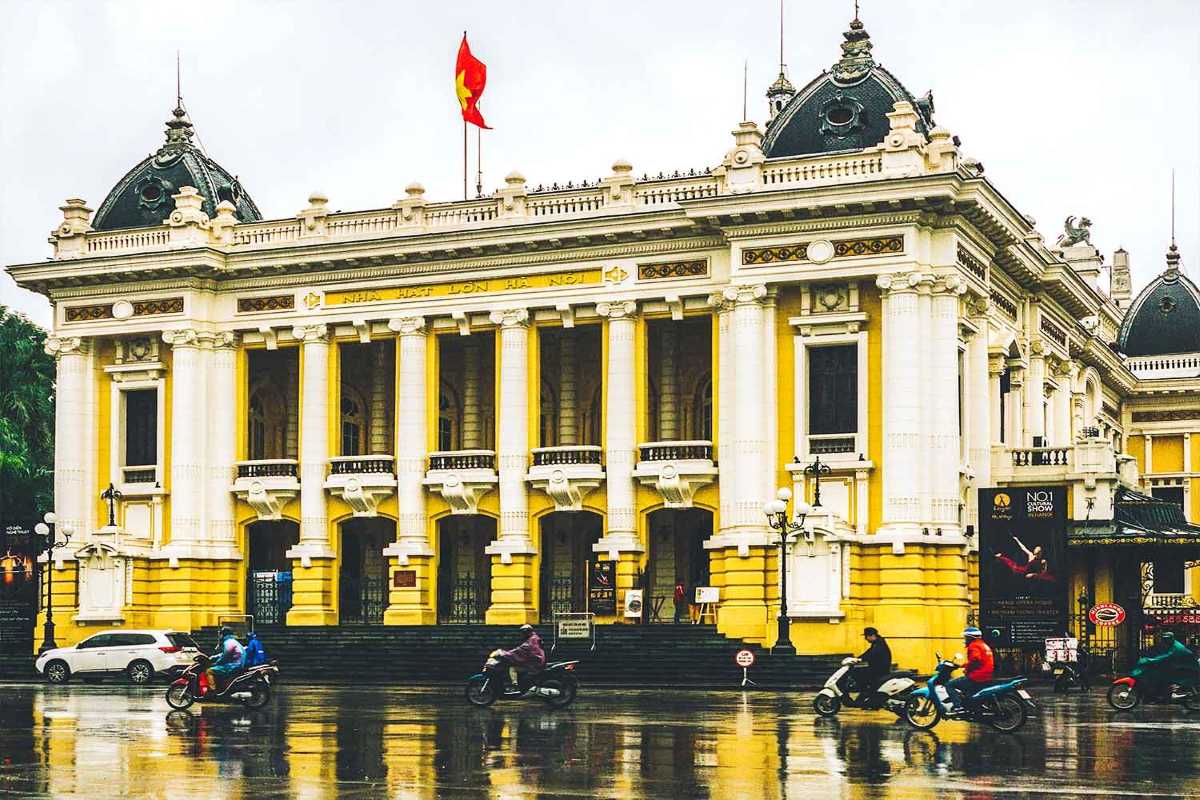
Special Events and Festivals
The Hanoi Opera House hosts a variety of special events and festivals that highlight Vietnam’s vibrant culture and arts scene. Planning your visit around these occasions offers a unique opportunity to experience traditional celebrations and international gatherings in an iconic setting. From film festivals to national holidays, these events bring added excitement and cultural depth to the Opera House.
Discover the Hanoi Opera House special events calendar to make the most of your visit.
Hanoi International Film Festival at the Opera House
The Hanoi International Film Festival is a prestigious cultural event occasionally held at the Hanoi Opera House. It showcases cinematic works from Vietnam and around the world, promoting artistic exchange and film appreciation. The festival offers visitors a chance to engage with diverse storytelling and enjoy screenings in a historic venue.
- Festival Timing: Usually biennial, with specific dates announced in advance
- Cultural Importance: Highlights Vietnamese and international film talents
- Attendance: Open to public with ticketed screenings and special events
Attending this festival is a memorable way to connect with Vietnam’s contemporary arts scene.
National Holiday Concerts and Cultural Celebrations
The Hanoi Opera House also hosts concerts and cultural programs aligned with Vietnam’s national holidays:
- Tet Festival Celebrations: Traditional music and dance performances welcoming the Lunar New Year
- Independence Day Concerts: Patriotic shows commemorating Vietnam’s national pride
- Other Cultural Events: Music and dance festivals reflecting the country’s heritage
These events provide an immersive experience of Vietnamese traditions and communal spirit.
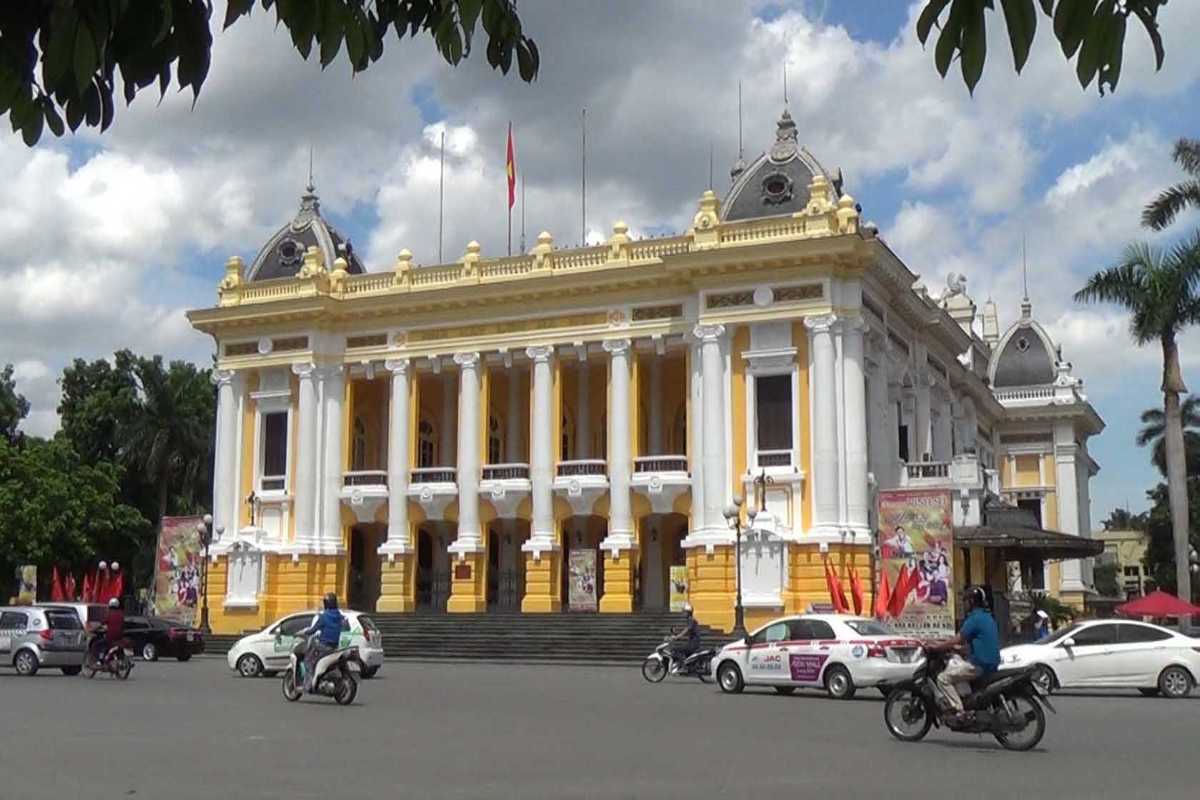
Insider Tips and Visitor Recommendations
Visiting the Hanoi Opera House is a memorable experience enhanced by knowing key tips and recommendations. From timing your visit to understanding the dress code and performance etiquette, this section helps you prepare for a smooth and enjoyable outing. Whether you are a first-time visitor or returning, these insider insights ensure you get the most from your time at this cultural landmark near Hoan Kiem Lake and the Old Quarter.
Plan your visit with confidence using expert advice on the Hanoi Opera House.
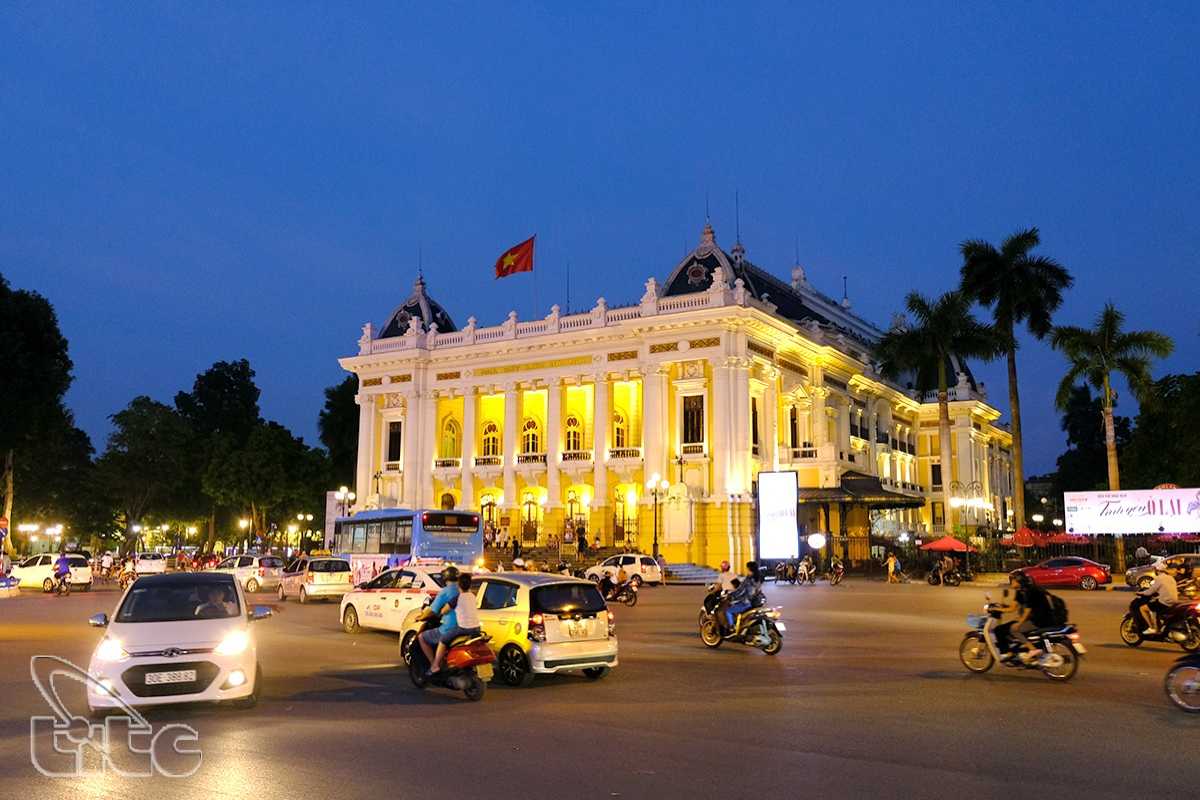
Maximizing Your Visit
To enjoy your visit to the Hanoi Opera House fully, consider these best practices:
- Arrive early to avoid lines and settle in comfortably
- Book tickets in advance online to secure preferred shows and seats
- Check the performance schedule and plan your visit accordingly
- Familiarize yourself with the venue layout and visitor amenities
Following these tips helps you avoid common pitfalls and enhances your overall experience.
Best Practices for Early Arrival and Ticket Booking
Maximize convenience with these practical steps:
- Book tickets online in advance to guarantee entry
- Arrive at least 30 minutes before showtime to allow for seating and security checks
- Use official booking platforms to avoid scams or overpriced tickets
- Plan your travel to avoid rush hour delays near Hanoi Opera House
These steps help secure the best seats and a hassle-free visit.
Dress Code and Etiquette for Attending Performances
Respect the cultural setting by following these guidelines:
- Dress smart casual or formal, avoiding overly casual attire
- Arrive quietly and switch off mobile devices during performances
- Refrain from photography or recording unless explicitly permitted
- Respect seating arrangements and staff instructions
Observing proper etiquette ensures a pleasant atmosphere for all attendees.
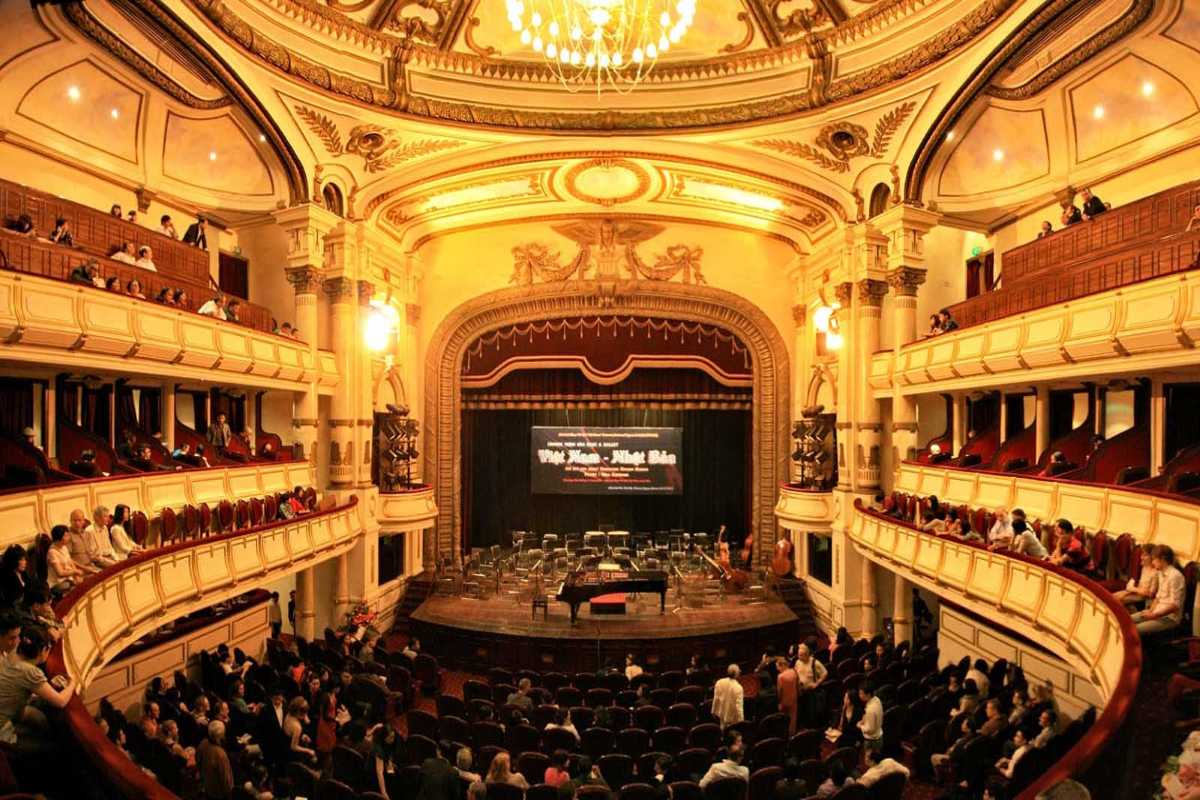
Tailored Advice for Different Visitor Types
The Hanoi Opera House offers diverse experiences tailored to suit families, cultural enthusiasts, and photographers. Understanding your interests helps optimize your visit, ensuring that you engage fully with the performances, tours, and surroundings. Whether seeking kid-friendly shows or the best photo opportunities, this advice caters to specific visitor needs.
Find personalized tips to make your visit to the Hanoi Opera House memorable and enjoyable.
Families: Suitable Shows and Kid-Friendly Tours
Families visiting the Hanoi Opera House can enjoy:
- Kid-friendly tours: Educational and engaging programs designed for children
- Family shows Hanoi: Performances suitable for all ages with cultural storytelling
- Interactive activities: Workshops introducing young visitors to Vietnamese arts
- Safe, accessible spaces ensuring a comfortable experience for families
These options provide enriching cultural exposure for children and their guardians.
Cultural Enthusiasts: In-Depth Experiences and Traditional Arts Exposure
For those passionate about culture, the Opera House offers:
- Traditional arts Hanoi Opera House: Immersive workshops and performances showcasing Vietnam’s heritage
- Cultural tours Hanoi: Detailed explorations of the building’s history and artistic significance
- Heritage programs: Events emphasizing Vietnamese performing arts traditions
- Opportunities to engage with expert guides and artists
These experiences deepen appreciation for Vietnam’s rich cultural landscape.
Photographers: Optimal Times and Locations for Photography
Photographers visiting the Hanoi Opera House should consider:
- Best photography spots Hanoi Opera House: Exterior views from Trang Tien Street and adjacent parks
- Hanoi Opera House photo tips: Visit during early morning or golden hour for ideal lighting
- Scenic views: Capture the neoclassical facade and surrounding French Quarter architecture
- Indoor photography: Check for allowed times and areas to shoot within the venue
These tips help capture stunning images of this iconic landmark.
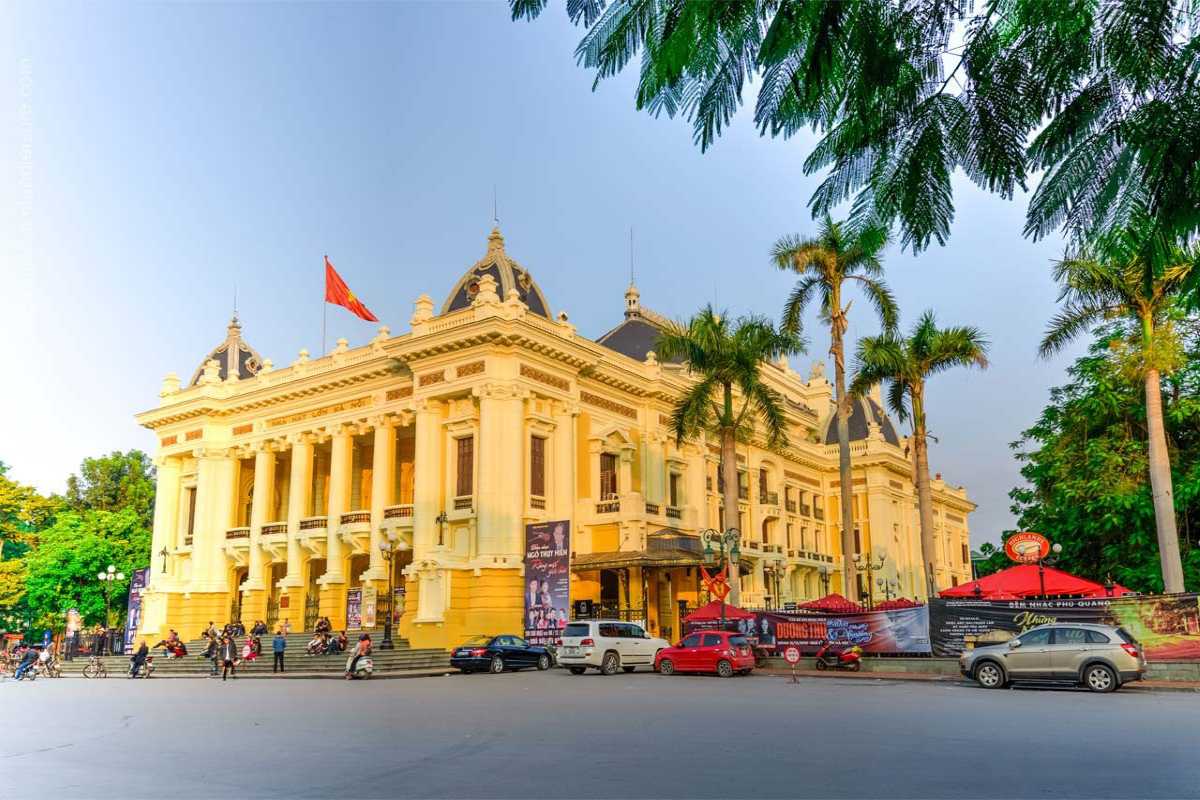
Combining Your Visit with Other Hanoi Highlights
To make the most of your trip, plan a day itinerary Hanoi Opera House that includes nearby cultural and historic sites. Combining the Opera House visit with excursions to iconic spots creates a rich and memorable experience. Explore the vibrant streets, lakes, and markets surrounding this landmark to fully immerse yourself in Hanoi’s unique charm.
Discover how to integrate your Opera House visit into a well-rounded Hanoi sightseeing itinerary.
Suggested Day Itineraries Including Hoan Kiem Lake and Old Quarter
Here are sample itineraries to help you explore efficiently:
- Morning: Start at the Hanoi Opera House for a guided tour or morning performance
- Midday: Walk to Hoan Kiem Lake for scenic views and photo opportunities
- Afternoon: Explore the Old Quarter with its bustling markets and narrow streets
- Evening: Return to the Opera House area for dinner or attend a cultural show
These steps offer a seamless blend of history, culture, and local life.
Nearby Shopping and Entertainment Options
Enhance your visit with these nearby venues:
- Local markets in the French Quarter offering crafts and souvenirs
- Cultural cafes serving traditional Vietnamese coffee and snacks
- Boutique shops with local art and textiles
- Entertainment spots with live music and cultural performances
These options provide enjoyable leisure after your cultural explorations.
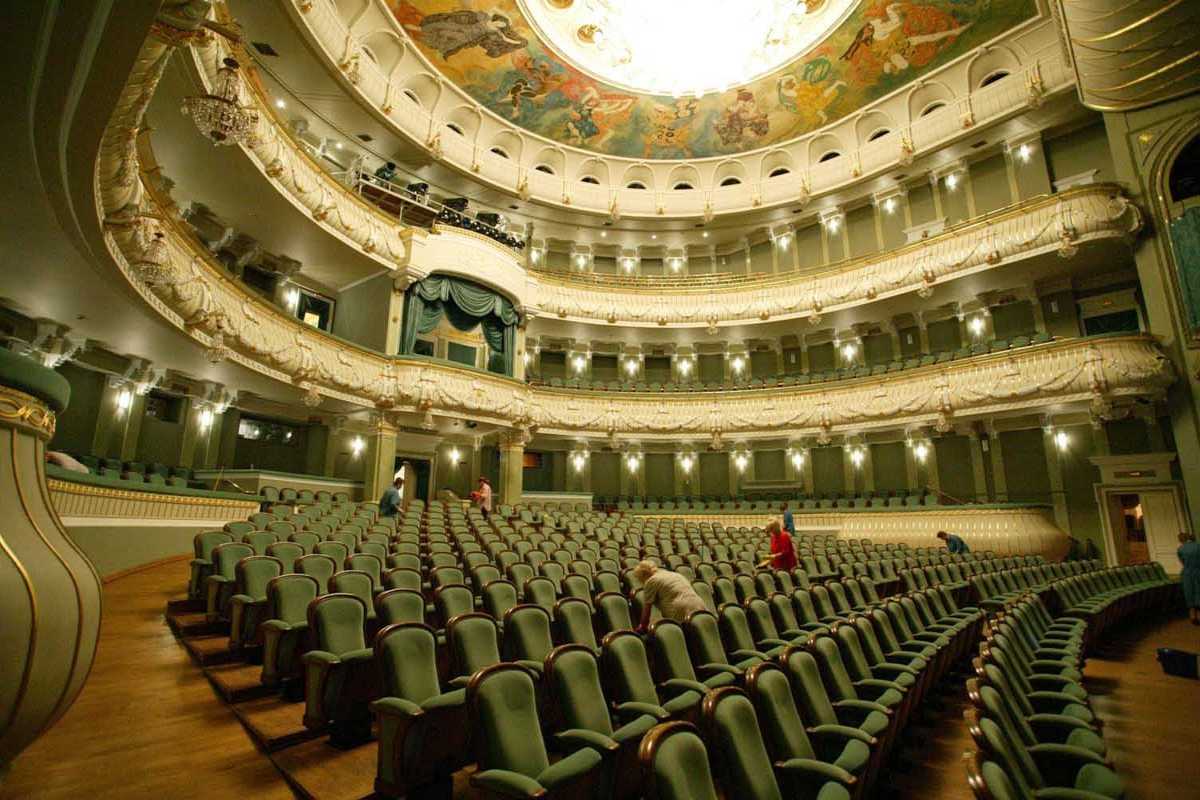
Exclusive Local Insights
Gain a deeper connection to the Hanoi Opera House through lesser-known stories and unique opportunities. Insider knowledge offers a richer appreciation of this historic venue, along with access to special tours and events that are not widely publicized. Discover the hidden gems that make your visit truly unforgettable.
Explore Hanoi Opera House historical anecdotes and learn how to access exclusive experiences.
Little-Known Historical Anecdotes and Architectural Facts
Discover fascinating stories and design details including:
- Unique architectural features inspired by French colonial style
- Historical trivia about the building’s role during key political events
- Design secrets that highlight the blend of French and Vietnamese motifs
- Anecdotes from performers and staff revealing hidden layers of the Opera House
These insights deepen your understanding and appreciation of this landmark.
Accessing Special Tours or Event Invitations
To enjoy exclusive experiences at the Hanoi Opera House, consider:
- Booking VIP tours offering backstage access and intimate guided visits
- Inquiring about invitations to cultural workshops and special events
- Connecting with official ticket offices or trusted travel agencies for insider access
- Taking advantage of limited-time offers during festival seasons
These opportunities provide privileged insights beyond general tours.
Seasonal Tips on Performances and Local Festivities
Maximize your cultural experience by aligning your visit with key events:
- Check the schedule for Hanoi Opera House seasonal performances featuring traditional and modern arts
- Plan visits during Hanoi festivals schedule, including Tet and cultural celebrations
- Attend holiday events showcasing special concerts and artistic programs
- Use local event calendars to stay updated on unique performance dates
Timing your visit enhances engagement with Hanoi’s vibrant cultural scene.
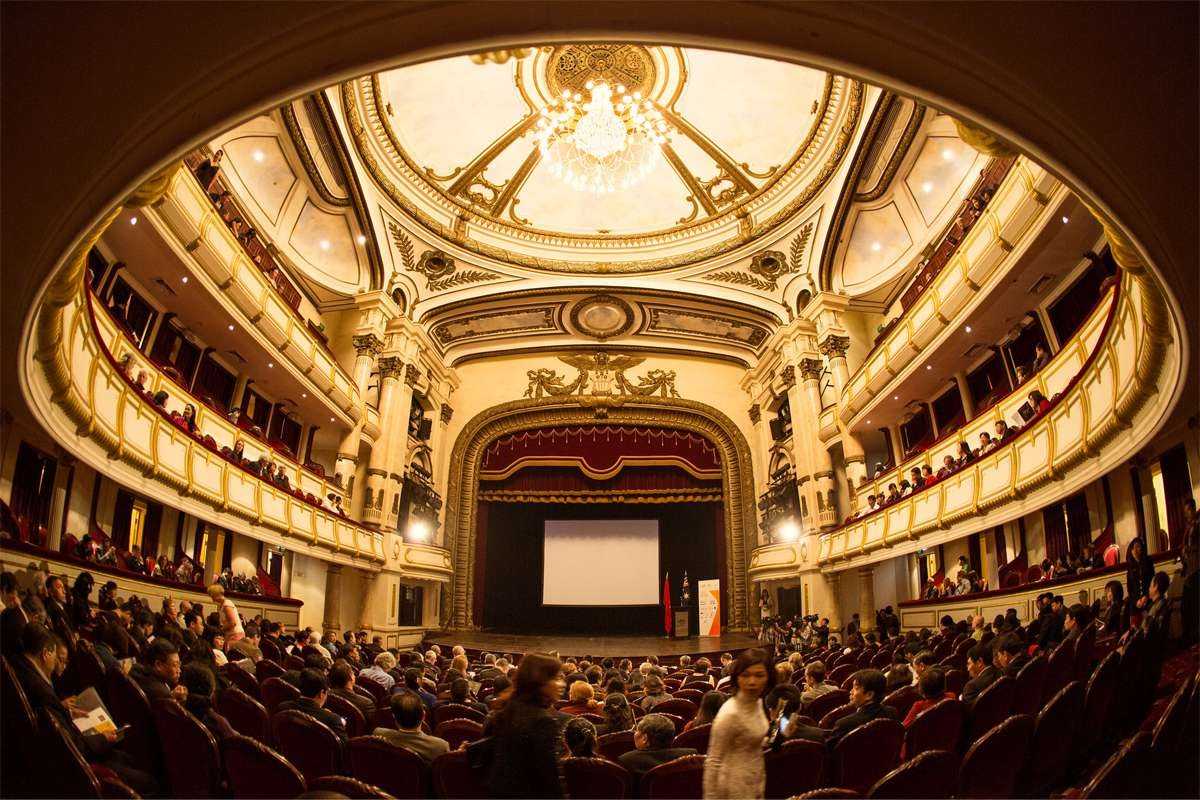
Practical Travel Tips and Additional Information
Visiting the Hanoi Opera House is easier and safer when you are well-prepared. This section provides essential practical advice covering health protocols, accommodation options, transportation tips, and contact information. Staying informed about these details ensures a smooth and comfortable visit.
Plan your trip with confidence using trusted information about the Hanoi Opera House.

Health, Safety, and Visitor Policies
To ensure your safety and comfort at the Hanoi Opera House, be aware of current health protocols and visitor rules:
- Hanoi Opera House health protocols: Mask requirements, sanitization stations, and social distancing measures
- Visitor safety guidelines Hanoi: Compliance with staff instructions and emergency procedures
- COVID-19 measures Hanoi: Latest updates on testing or vaccination requirements
- Venue rules Hanoi: Restrictions on food, drinks, and prohibited items
Being prepared with this knowledge helps you enjoy a worry-free visit.
Current Health Protocols and Safety Guidelines
The Opera House implements several safety measures including:
- Mandatory mask wearing inside the venue
- Regular cleaning of common areas and seating
- Hand sanitizing stations at entrances and key points
- Temperature screening for visitors upon arrival
Following these protocols protects all guests and staff.
Rules on Photography, Food, and Behavior Inside the Venue
Respect the venue’s policies to ensure a pleasant environment:
- Photography rules: No flash photography or video recording during performances unless permitted
- Food and drink: Consumption generally prohibited inside auditoriums
- Behavior guidelines: Maintain quiet and respectful conduct during shows
- Follow staff directions for seating and emergency exits
Adhering to these rules helps preserve the Opera House’s cultural atmosphere.
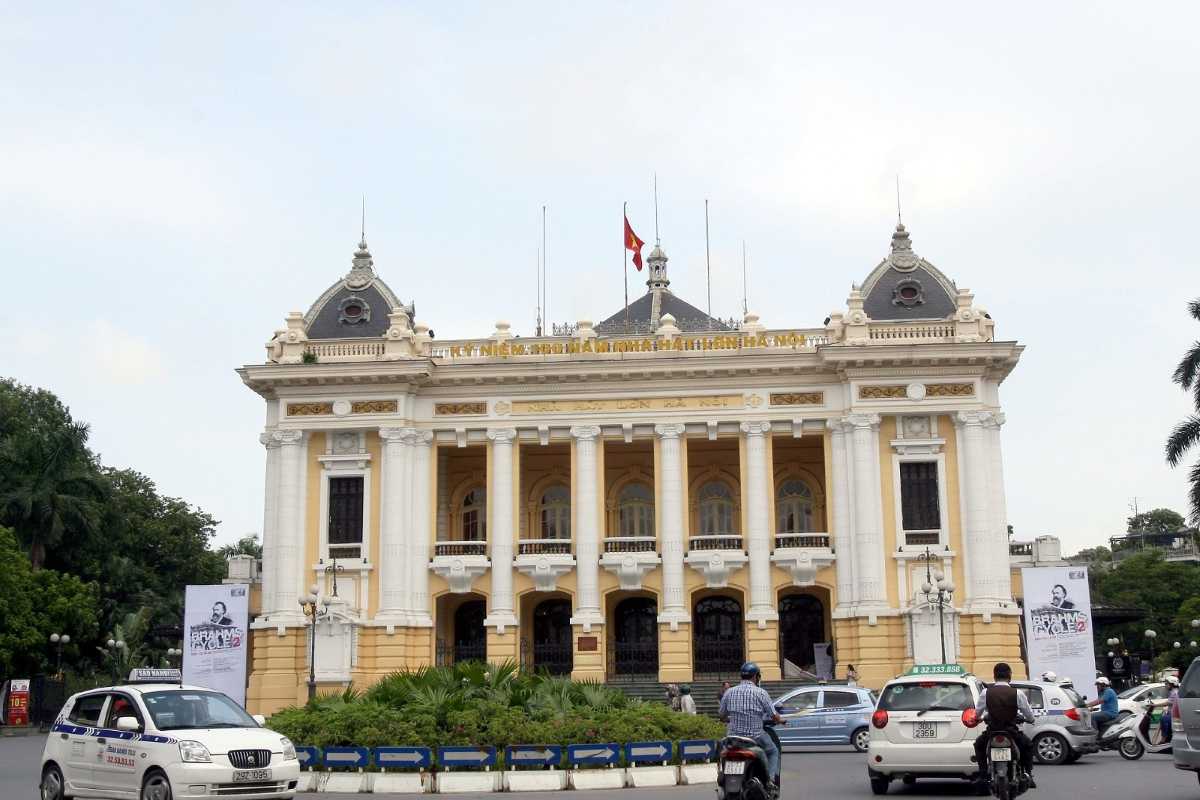
Accommodation Options Near the Opera House
Finding comfortable lodging near the Hanoi Opera House enhances your visit by keeping you close to Hanoi’s cultural heart. This section offers recommendations covering a variety of budgets and preferences, ensuring you select the best fit for your stay in the vibrant French Quarter.
Explore the best hotels and guesthouses near Hanoi Opera House for convenience and comfort.
Range of Hotels and Guesthouses by Budget and Preference
Options near the Opera House include:
- Budget hotels Hanoi Opera House: Affordable stays with essential amenities for travelers on a budget
- Mid-range hotels: Comfortable accommodations offering a balance of price and services
- Luxury hotels Hanoi Opera House: Upscale properties with premium amenities and services
- Guesthouses Hanoi: Cozy, local-style lodgings for an authentic experience
These options suit diverse traveler needs and preferences.
Booking Advice for Holidays and Festival Periods
To secure your preferred accommodation:
- Book well in advance during Hanoi’s peak seasons and festival periods
- Consider flexible cancellation policies to accommodate itinerary changes
- Compare prices across booking platforms for the best deals
- Be aware that availability may be limited near major events at Hanoi Opera House
Planning ahead ensures a stress-free lodging experience.

Transportation and Connectivity
Arriving at and leaving the Hanoi Opera House is simple when you know your transport options. This section helps you plan airport transfers and navigate local travel smoothly, ensuring your trip starts and ends without hassle.
Learn about reliable Hanoi Opera House airport transfer services and parking facilities to make your journey seamless.
Airport Transfer Options and Travel Times
Convenient airport transfer choices include:
- Taxi services: Available 24/7 with approximate travel time of 30–45 minutes from Noi Bai International Airport
- Private car hire: Pre-booked vehicles offering comfort and fixed rates
- Shuttle buses: Budget-friendly options with designated stops near the Opera House
- Ride-hailing apps: Quick and accessible rides with estimated fares and wait times
Choose the best transfer method to fit your schedule and budget.
Parking Availability and Transport Tips for Private Vehicles
If you plan to drive, consider the following:
- Parking locations: Nearby public and private parking lots with hourly rates
- Traffic tips: Avoid peak hours to minimize delays around the French Quarter
- Vehicle safety: Secure parking and watch for restricted zones near the Opera House
- Alternative transport: Use ride-hailing or taxis if parking is limited
These tips help ensure smooth mobility and parking near the Hanoi Opera House.

Useful Contacts and Resources
For a seamless experience at the Hanoi Opera House, use official and reliable contacts to book tickets, seek assistance, and gather information. Accessing trusted sources ensures accurate details and support during your visit.
Visit the Hanoi Opera House official website and local tourist centers for all your needs.
Official Hanoi Opera House Website and Ticketing Platforms
Use these platforms for authentic information and bookings:
- Official Hanoi Opera House site: Provides show schedules, ticket purchases, and event updates
- Authorized ticket platforms: Reliable sources for online ticket buying and seat selection
- Asia Travel Links website: Assistance with itinerary planning and ticket bookings via contact channels
- Email and phone contacts: Direct support for inquiries and special requests
Booking through official channels guarantees legitimacy and smooth entry.
Local Tourist Information Centers and Helplines
If you need in-person assistance or information while in Hanoi:
- Hanoi tourist info center: Located centrally, offers maps, brochures, and travel advice
- Visitor helplines: Phone numbers for immediate support on travel and ticketing issues
- Local guides: Available for personalized tours and recommendations near the Opera House
- Travel agency contacts: Professional services for customized travel planning
Utilizing these resources helps you navigate Hanoi with confidence.

Conclusion
The Hanoi Opera House stands as a remarkable symbol of Vietnamese heritage, blending rich history with vibrant cultural performances. This iconic landmark offers visitors a unique experience that combines architectural beauty, historical significance, and dynamic arts programming. Planning your visit to coincide with special events or peak seasons enhances the cultural immersion and leaves a lasting impression. Embrace the opportunity to explore one of Hanoi’s premier attractions and deepen your understanding of the city’s artistic legacy.

Recap of Hanoi Opera House’s Cultural and Historical Importance
The Hanoi Opera House is more than a stunning architectural landmark; it embodies the cultural soul of Hanoi. Its neoclassical design and French colonial roots tell a story of Vietnam’s historical journey. Serving as a premier venue for live performances, it preserves Vietnamese artistic traditions while welcoming international acts. This blend of history and culture makes the Opera House an essential destination for visitors seeking to connect with the city’s heritage.

Final Visitor Recommendations
Maximize your visit to the Hanoi Opera House with these practical tips:
- Book tickets early to secure preferred performances and seating
- Dress respectfully, following the Opera House dress code for shows
- Visit during festivals or special events for a richer cultural experience
- Combine your visit with nearby attractions like Hoan Kiem Lake and the Old Quarter
- Take advantage of guided tours and educational programs for deeper insight
These recommendations ensure a smooth, memorable experience at this cultural treasure.
The Value of Combining History, Culture, and Live Performances
Experiencing the Hanoi Opera House means immersing yourself in a fusion of history and vibrant cultural arts. The stunning architecture complements the dynamic lineup of opera, ballet, and traditional Vietnamese music. This comprehensive experience enriches your appreciation of Hanoi’s artistic landscape and creates lasting memories.
Planning Visits Around Events and Seasons for Best Experience
To enjoy the best of the Hanoi Opera House, consider:
- Scheduling visits during peak cultural festivals or the Hanoi International Film Festival
- Avoiding busy tourist seasons for quieter, more intimate performances
- Checking the Opera House events schedule in advance to align your trip with special shows
- Exploring local festivities around Tet Festival for authentic cultural immersion
Timing your visit thoughtfully enhances both enjoyment and insight.

Explore Hanoi Further
After experiencing the Hanoi Opera House, take time to explore other Hanoi cultural attractions that deepen your appreciation of the city’s rich heritage. Visit vibrant markets, historic temples, and museums that showcase Vietnamese traditions. Expanding your itinerary with these diverse sites offers a fuller, more immersive journey into Hanoi’s unique history and culture.
Suggest Continuing Discovery of Hanoi’s Rich Heritage Beyond the Opera House
To truly embrace Hanoi’s heritage, consider exploring:
- The Temple of Literature, Vietnam’s first university
- The Ho Chi Minh Mausoleum complex
- The Old Quarter’s bustling streets and historic architecture
- The Vietnam Museum of Ethnology for cultural insights
- Heritage walking tours highlighting colonial and traditional sites
These destinations complement your visit to the Hanoi Opera House and enrich your cultural journey.

Mike Nguyen
Travel Advisor
Mobile: +84917506881 (whatsapp available)
Email: contact@asiatravellinks.com
Faqs
The Hanoi Opera House is a historic cultural landmark in the heart of Hanoi, known for its stunning French colonial architecture and rich artistic heritage. It serves as a premier venue for traditional Vietnamese and international performing arts, making it a vital symbol of cultural identity.
- Built during the French colonial era, inspired by Paris’s Palais Garnier
- Hosts a wide variety of performances including opera, ballet, and traditional music
- A key site for cultural events and historical significance in Vietnam
- Located in the bustling French Quarter, central to Hanoi’s arts scene
Visiting the Hanoi Opera House offers a unique opportunity to experience Vietnam’s artistic legacy and architectural grandeur firsthand. Plan your visit to discover this iconic cultural treasure.
Getting to the Hanoi Opera House from Hoan Kiem Lake is straightforward due to its central location in the French Quarter. It is easily accessible by foot or various modes of transport.
- Walking distance of about 10-15 minutes through historic streets
- Taxi or ride-hailing services like Grab offer quick rides within 5 minutes
- Several bus routes connect Hoan Kiem Lake area to the French Quarter
- Well-signposted for easy navigation from the lake area to the Opera House
Whether you choose to walk or take public transport, reaching the Hanoi Opera House from Hoan Kiem Lake is convenient and offers a chance to soak in the city’s vibrant atmosphere. Consider combining a visit to both for a full cultural experience.
The Hanoi Opera House operates with specific hours for tours and performances, designed to accommodate visitors and cultural events.
- Tours typically available during daytime hours, usually 8:00 AM to 5:00 PM
- Performance schedules vary, with evening shows commonly starting between 7:00 PM and 8:30 PM
- Opening hours may change during special events or holidays
- It is advisable to check the official schedule ahead of your visit for current timings
Planning your visit around official opening hours ensures a smooth experience at the Hanoi Opera House. Early preparation allows you to enjoy both guided tours and live performances.
Entry fees at the Hanoi Opera House vary depending on the type of visit, whether for tours or attending performances.
- Guided tour tickets are generally affordable, often under 100,000 VND
- Performance ticket prices vary widely based on show type and seating, ranging from budget to premium levels
- Special events and festivals may have different pricing structures
- Tickets can be purchased online, on-site, or via authorized travel agencies
Understanding ticket prices helps plan your budget for visiting the Hanoi Opera House. Booking tickets in advance can secure preferred seating and reduce wait times.



